
Rule of the Robots: How Artificial Intelligence Will Transform Everything
by
Martin Ford
Published 13 Sep 2021
In other words, Amazon can take advantage of robots with limited capability simply by managing the flow of work within its distribution centers. This ability to reliably predict the outcome of a robotic operation and work around failure is really the bright line between a controlled warehouse-type environment, where robots are likely to thrive in the relatively near future, and the far more chaotic outside world, where the challenges for technologies like self-driving cars are likely to be far more daunting. A warehouse robot that can predictably handle half the items it might encounter can be highly useful. A self-driving car operating on a public road that can reliably navigate ninety-nine percent of the situations it encounters may be worse than useless because that outlying one percent virtually guarantees disaster.
…
(Includes videos.) 8. Will Knight, “Why solving a Rubik’s Cube does not signal robot supremacy,” Wired, October 16, 2019, www.wired.com/story/why-solving-rubiks-cube-not-signal-robot-supremacy/. 9. Noam Scheiber, “Inside an Amazon warehouse, robots’ ways rub off on humans,” New York Times, July 3, 2019, www.nytimes.com/2019/07/03/business/economy/amazon-warehouse-labor-robots.html. 10. Eugene Kim, “Amazon’s $775 million deal for robotics company Kiva is starting to look really smart,” Business Insider, June 15, 2016, www.businessinsider.com/kiva-robots-save-money-for-amazon-2016-6. 11. Will Evans, “Ruthless quotas at Amazon are maiming employees,” The Atlantic, November 25, 2019, www.theatlantic.com/technology/archive/2019/11/amazon-warehouse-reports-show-worker-injuries/602530/. 12.
…
Matt Simon, “Inside the Amazon warehouse where humans and machines become one,” Wired, June 5, 2019, www.wired.com/story/amazon-warehouse-robots/. 16. James Vincent, “Amazon’s latest robot champion uses deep learning to stock shelves,” The Verge, July 5, 2016, www.theverge.com/2016/7/5/12095788/amazon-picking-robot-challenge-2016. 17. Jeffrey Dastin, “Amazon’s Bezos says robotic hands will be ready for commercial use in next 10 years,” Reuters, June 6, 2019, www.reuters.com/article/us-amazon-com-conference/amazons-bezos-says-robotic-hands-will-be-ready-for-commercial-use-in-next-10-years-idUSKCN1T72JB. 18. Tech Insider, “Inside a warehouse where thousands of robots pack groceries (video),” YouTube, May 9, 2018, www.youtube.com/watch?
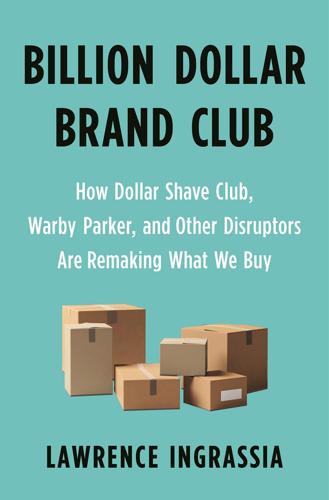
Billion Dollar Brand Club: How Dollar Shave Club, Warby Parker, and Other Disruptors Are Remaking What We Buy
by
Lawrence Ingrassia
Published 28 Jan 2020
After dabbling in investing and consulting for a few years, Welty and Johnson began hearing about a start-up named Kiva Systems, which was in the early stage of developing warehouse robots. Kiva had been founded by former executives of Webvan, an online grocer that had gone bust, in part because its warehouses weren’t sufficiently automated. Welty’s immediate reaction was “I don’t believe you. Robots in a warehouse? Not a chance.” But as he and Johnson heard more, they became curious. Kiva robots had been installed in the mid-2000s by a few big retail chains, such as Staples, for their company-owned warehouses. Welty persuaded a former customer to sneak him into a warehouse employing Kiva robots. “I was completely blown away. ‘This is the coolest thing I’ve ever seen,’” he recalls.
…
They wanted a tour. Who would have thought that warehouse guys could build a robot?” Welty says. Locus has helped Quiet Logistics expand its business in the year since it was cut off by Amazon and Kiva. By 2019, it had begun expanding to the West Coast and operated two million square feet of warehouse space, with plans to double that amount by 2021, and it had doubled its number of customers to more than sixty, adding brands such as the luggage start-up Away and the online mattress brand Tuft & Needle. With only about 10 percent of warehouses nationwide having installed robots, Welty and Johnson are confident that their bet on Locus will pay off.
…
Amazon puts the figure at 270, but that doesn’t include some facilities, such as distribution centers operated by Amazon’s Whole Foods subsidiary. With more than two hundred thousand robots: Lauren Feiner, “Amazon Shows Off Its New Warehouse Robots That Can Automatically Sort Packages,” CNBC, June 5, 2019, https://www.cnbc.com/2019/06/05/amazon-shows-off-its-new-warehouse-robots.html; Nick Wingfield, “As Amazon Pushes Forward with Robots, Workers Find New Roles,” New York Times, September 10, 2017, https://www.nytimes.com/2017/09/10/technology/amazon-robots-workers.html. testing new warehouse automation equipment: Jeffrey Dastin, “Amazon Rolls Out Machines That Pack Orders and Replace Jobs,” Reuters, May 13, 2019, https://www.reuters.com/article/us-amazon-com-automation-exclusive/exclusive-amazon-rolls-out-machines-that-pack-orders-and-replace-jobs-idUSKCN1SJ0X1.
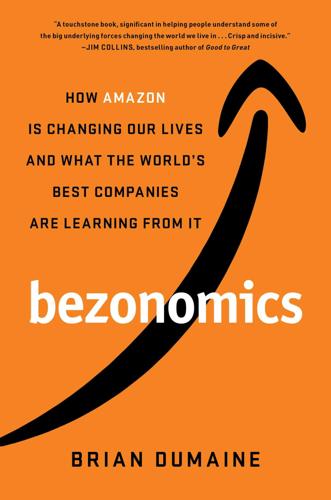
Bezonomics: How Amazon Is Changing Our Lives and What the World's Best Companies Are Learning From It
by
Brian Dumaine
Published 11 May 2020
Amazon’s 175 global fulfillment centers are some of the most automated in the world. After the company bought Kiva robots for $775 million in 2012, it started filling its warehouses with robots, and now some 200,000 of these machines whir around Amazon’s facilities doing many jobs that used to be done by humans. In one sense, this is a good thing. Robots now can perform a lot of the backbreaking lifting of packages and bins. Large robotic arms, for instance, can lift heavy pallets laden with products from one floor to the next. Amazon’s warehouses that use these robots, according to one estimate, contain on average 50 percent more inventory per square foot than those centers without and have helped cut operating costs by some 20 percent.
…
Devices such as cell phones, Amazon Echo smart speakers, Amazon microwaves, earbuds, and thermostats connect to the Internet, making them smarter and easier for us to control. (And as we saw in the previous chapter, easier for the companies that make them to collect data on our buying habits.) In the business arena, warehouse robots, scanners, and self-driving delivery vans also connect to the Internet, thanks to inexpensive sensors and smart algorithms. By 2022, there will be more than 29 billion connected devices worldwide, roughly four times the number of people in the world. Now tech giants such as Alibaba, JD.com, Tencent, and even Google’s parent, Alphabet—with its smart home devices and self-driving cars—are joining Amazon in its quest to infiltrate every corner of our lives with AI.
…
On the day the deal became public, Ocado’s shares jumped 45 percent. Chinese online retailer JD.com, which has designed a warehouse specifically to work smoothly with machines, offers another glimpse of what the future may look like. One of China’s largest online retailers with 310 million customers, JD.com opened a warehouse in 2017 that uses robots to pick up packages of a predictable shape and size—like a cell phone or a box of laundry soap. It’s the world’s most automated facility of its kind. From the outside, the large white building on the outskirts of Shanghai looks like any warehouse in China. What catches the eye—besides the giant red logo of JD.com with its smiling dog—is what’s not there: a large parking lot for employees.

Arriving Today: From Factory to Front Door -- Why Everything Has Changed About How and What We Buy
by
Christopher Mims
Published 13 Sep 2021
Dedication For Shep Contents Cover Title Page Dedication Prologue Chapter 1: The Gathering Storm Chapter 2: The Box Chapter 3: Ships and Other Cyborgs Chapter 4: Coming to America Chapter 5: Parallel Parking 1,200 Feet of Ship Chapter 6: Longshoremen against the Machine Chapter 7: The Largest Robots on Earth Chapter 8: The Little-Known, Rarely Understood Organizing Principle of Modern Work Chapter 9: How a Management Philosophy Became Our Way of Life Chapter 10: Rime of the Long-Haul Trucker Chapter 11: 100 Percent of Everything Chapter 12: How “Hitler’s Highway” Became America’s Circulatory System Chapter 13: The Future of Trucking Chapter 14: What Actually Happens Inside Amazon’s Warehouses Chapter 15: The Unbearable Complexity of Robotic Warehousing Chapter 16: Bezosism Chapter 17: From Japan with Love: Origins of the Amazon Way Chapter 18: How Warehouse Work Injures Chapter 19: Amazon’s Employee-Lite Endgame Chapter 20: The Middle Mile Chapter 21: The Future of Delivery Chapter 22: The Last Mile Acknowledgments Notes Index About the Author Praise Copyright About the Publisher Prologue If I’ve done my job, the book you’re holding is a skeleton key.
…
Chapter 15 The Unbearable Complexity of Robotic Warehousing It’s at this point in the story that a reasonable person asks why, in a company that has deployed so many robots, so many humans must perform the many Sisyphean tasks at the heart of Amazon’s sorting of goods in its warehouses. The world’s first industrial robot was installed in a factory owned by General Motors in 1961; the underlying technology was patented in 1954. Why have we not by now created robotic arms dexterous enough to take over a task as elementary as picking up an object and placing it in a soft-sided cubby? The short answer to that question is that this task only seems elementary because humans are so incredibly good at it.
…
One day, in a state of utter exhaustion, Emily kneeled to grab something off a lower shelf and discovered to her horror that her legs had simply stopped working. Anyone who has ever pushed themselves past the point of complete exhaustion knows the sense of surprise and alienation that can overwhelm you in a moment like this. There Emily sat, sobbing. No one saw her and no one came to help. Amazon warehouses that lack robots are so vast that associates rarely bump into one another. Amazon’s logistics hubs are incredibly diverse, their inner workings dependent on their functions and vintage. The pace at which its associates must work varies by facility and time of year, especially around the holidays, when the company may go so far as to rent out additional space from other warehouse providers to handle the increase in demand.
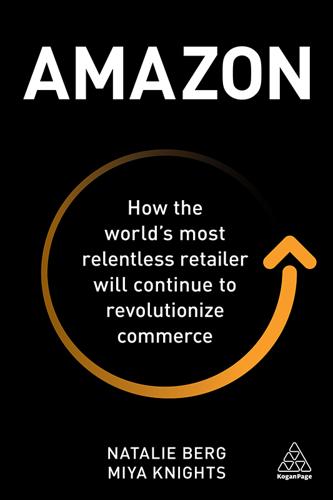
Amazon: How the World’s Most Relentless Retailer Will Continue to Revolutionize Commerce
by
Natalie Berg
and
Miya Knights
Published 28 Jan 2019
And he can fire everybody in the company from the chairman on down, simply by spending his money somewhere else.’7 What sets Amazon apart, however, is their relentless dissatisfaction with the status quo. They are continuously looking for better ways of serving their customers and making the shopping experience even more convenient. When retailers talk of innovation, they tend to mean things like pop-up stores and digital displays. With Amazon, it’s underwater warehouses and robotic postmen. In his 2016 letter to shareholders, Jeff Bezos wrote: There are many advantages to a customer-centric approach, but here’s the big one: customers are always beautifully, wonderfully dissatisfied, even when they report being happy and business is great. Even when they don’t yet know it, customers want something better, and your desire to delight customers will drive you to invent on their behalf.
…
In many ways, the Whole Foods Market acquisition was an admission that the grocery category will always require an element of physical retail, albeit one of a more versatile nature. At the same time, as we’ve already seen with other sectors, technology will dismantle the barriers traditionally associated with buying food online, while continued urbanization will simultaneously drive demand and bring costs down. Automation – from warehouse robotics to driverless delivery trucks – will improve supply chain efficiencies and the rise in third-party delivery services (Instacart and Shipt, for example) will allow more supermarkets to offer speedy delivery without the hefty investment in infrastructure or systems. Meanwhile, the customer value proposition for online grocery is exploding; today, consumers benefit from improved mobile phone interfaces, single sign-ons, greater personalization and site navigation, automated lists, recipe inspiration, delivery passes, voice-activated shopping, simplified replenishment, same-day delivery and alternatives to home delivery such as click & collect or automated lockers.
…
The rapid expansion of its Prime commitments has almost certainly been a catalyst for Amazon to bring the ubiquitous connectivity of its cloud services to bear on the development of increasingly autonomous, command-and-control operational fulfilment capabilities for many years. In this way, it has also entrusted robots in its warehouses and delivery drones with autonomous functionality to support growth. As previously discussed, in 2012, Amazon acquired Kiva Systems, the robotics company that had been supplying warehouse robots for Amazon to automate its order fulfilment processes, and which is now the backbone of the company’s Robotics division. In 2015, MIT Technology Review noted some 2,000 of the orange Kiva robots that were helping humans keep shelves stocked during a tour of a New Jersey Amazon distribution and fulfilment centre.8 Today, consensus estimates put its total robot fleet at over 100,000.

Prediction Machines: The Simple Economics of Artificial Intelligence
by
Ajay Agrawal
,
Joshua Gans
and
Avi Goldfarb
Published 16 Apr 2018
However, an Amazon warehouse has an almost infinite variety of shapes, sizes, weights, and firmness of items that are placed on shelves with many possible positions and orientations for non-rectangular objects. In other words, the grasping problem in a warehouse is characterized by an infinite number of “ifs,” whereas grasping in a car assembly plant is designed to have very few “ifs.” So, in order to grasp in a warehouse setting, robots must be able to “see” the object (analyze the image) and predict the right angle and pressure in order to hold the object and not drop or crush it. In other words, prediction is at the root of grasping the wide variety of objects in a fulfillment center. Research into the grasping problem uses reinforcement learning to train robots to mimic humans.
…
Steve Jobs in Memory and Imagination: New Pathways to the Library of Congress, Michael Lawrence Films, 2006, https://www.youtube.com/watch?v=ob_GX50Za6c. Chapter 14 1. Steven Levy, “A Spreadsheet Way of Knowledge,” Wired, October 24, 2014, https://backchannel.com/a-spreadsheet-way-of-knowledge-8de60af7146e. 2. Nick Statt, “The Next Big Leap in AI Could Come from Warehouse Robots,” The Verge, June 1, 2017, https://www.theverge.com/2017/6/1/15703146/kindred-orb-robot-ai-startup-warehouse-automation. 3. L. B. Lusted, “Logical Analysis in Roentgen Diagnosis,” Radiology 74 (1960): 178–193. 4. Siddhartha Mukherjee, “A.I. versus M.D.,” New Yorker, April 3, 2017, http://www.newyorker.com/magazine/2017/04/03/ai-versus-md. 5.
…
See autonomous vehicles sensors, 15, 44–45, 105 Shevchenko, Alex, 96 signal vs. noise, in data, 48 Simon, Herbert, 107 simulations, 187–188 skills, loss of, 192–193 smartphones, 129–130, 155 Smith, Adam, 54, 65 The Snows of Kilimanjaro (Hemingway), 25–26 society, 3, 19, 209–224 control by big companies and, 215–217 country advantages and, 217–221 inequality and, 212–214 job loss and, 210–212 Solow, Robert, 123 Space Shuttle Challenger disaster, 143 sports, 117 camera automation and, 114–115 sabermetrics in, 56, 161–162 spreadsheets, 141–142, 163, 164 Standard & Poor’s, 36–37 statistics and statistical thinking, 13, 32–37 economic thinking vs., 49–50 human weaknesses in, 54–58 stereotypes, 19 Stern, Scott, 169–170, 218–219 Stigler, George, 105 strategy, 2, 18–19 AI-first, 179–180 AI’s impact on, 153–166 boundary shifting in, 157–158 business transformation and, 167–178 capital and, 170–171 cheap AI and, 15–17 data and, 174–176 economics of, 165 hybrid corn adoption and, 158–160 judgment and, 161–162 labor and, 171–174 learning, 179–194 organizational structure and, 161–162 value capture and, 162–165 strokes, predicting, 44–46, 47–49 Sullenberger, Chesley “Sully,” 184 supervised learning, 183 Sweeney, Latanya, 195, 196 Tadelis, Steve, 199 Taleb, Nassim Nicholas, 60–61 The Taming of Chance (Hacking), 40 Tanner, Adam, 195 task analysis, 74–75, 125–131 AI canvas and, 134–139 job redesign and, 142–145 Tay chatbot, 204–205 technical support, 90–91 Tencent Holdings, 164, 217, 218 Tesla, 8 Autopilot legal terms, 116 navigation apps and, 89 training data at, 186–187 upgrades at, 188 Tesla Motor Club, 111–112 Thinking, Fast and Slow (Kahneman), 209–210 Tinder, 189 tolerance for error, 184–186 tools, AI, 18 AI canvas and, 134–138 for deconstructing work flows, 123–131 impact of on work flows, 126–129 job redesign and, 141–151 usefulness of, 158–160 topological data analysis, 13 trade-offs, 3, 4 in AI-first strategy, 181–182 with data, 174–176 between data amounts and costs, 44 between risks and benefits, 205 satisficing and, 107–109 simulations and, 187–188 strategy and, 156 training data for, 43, 45–47 data risks, 202–204 in decision making, 74–76, 134–138 by humans, 96–97 in-house and on-the-job, 185 in medical imaging, 147 in modeling skills, 101 translation, language, 25–27, 107–108 trolley problem, 116 truck drivers, 149–150 Tucker, Catherine, 196 Tunstall-Pedoe, William, 2 Turing, Alan, 13 Turing test, 39 Tversky, Amos, 55 Twitter, Tay chatbot on, 204–205 Uber, 88–89, 164–165, 190 uncertainty, 3, 103–110 airline industry and weather, 168–169, 170 airport lounges and, 105–106 business boundaries and, 168–170 contracts in dealing with, 170–171 in e-commerce delivery times, 157–158 reducing, strategy and, 156–157 strategy and, 165 unknown knowns, 59, 61–65, 99 unknown unknowns, 59, 60–61 US Bureau of Labor Statistics, 171 US Census Bureau, 14 US Department of Defense, 14, 116 US Department of Transportation, 112, 185 Validere, 3 value, capturing, 162–165 variables, 45 omitted, 62 Varian, Hal, 43 variance, 34–36 fulfillment industry and, 144–145 taming complexity and, 103–110 Vicarious, 223 video games, 183 Vinge, Vernor, 221 VisiCalc, 141–142, 163, 164 Wald, Abraham, 101 Wanamaker, John, 174–175 warehouses, robots in, 105 Watson, 146 Waymo, 95 Waze, 89–90, 106, 191 WeChat, 164 Wells Fargo, 173 Windows 95, 9–10 The Wizard of Oz, 24 work flows AI tools’ impact on, 126–129 decision making and, 133–140 deconstructing, 123–131 iPhone keyboard design and, 129–130 job redesign and, 142–145 task analysis, 125–131 World War II bombing raids, 100–102 X.ai, 97 Xu Heyi, 164 Yahoo, 216 Y Combinator, 210 Yeomans, Mike, 117 YouTube, 176 ZipRecruiter, 93–94, 100 About the Authors AJAY AGRAWAL is professor of strategic management and Peter Munk Professor of Entrepreneurship at the University of Toronto’s Rotman School of Management and the founder of the Creative Destruction Lab.

You've Been Played: How Corporations, Governments, and Schools Use Games to Control Us All
by
Adrian Hon
Published 14 Sep 2022
“Smart Hospitality Market to Reach USD 44.38 Billion By 2026 | Reports and Data,” GlobeNewswire, November 19, 2019, www.globenewswire.com/news-release/2019/11/19/1949666/0/en/Smart-Hospitality-Market-To-Reach-USD-44-38-Billion-By-2026-Reports-and-Data.html; John Biberstein, “Automation and Its Growing Impact on the Fast Food Industry,” globalEDGE, International Business Center, Michigan State University, September 16, 2019, https://globaledge.msu.edu/blog/post/55773/automation-and-its-growing-impact-on-the; “Robo Taxi Market Size to Reach USD 38.61 Billion by 2030 at CAGR 67.8% - Valuates Reports,” Valuates Reports, CISION PR Newswire, September 16, 2021, www.prnewswire.com/news-releases/robo-taxi-market-size-to-reach-usd-38-61-billion-by-2030-at-cagr-67-8---valuates-reports-301378390.html. 20. Adam Satariano and Cade Metz, “A Warehouse Robot Learns to Sort Out the Tricky Stuff,” New York Times, January 29, 2020, www.nytimes.com/2020/01/29/technology/warehouse-robot.html. 21. Will Evans, “Ruthless Quotas at Amazon Are Maiming Employees,” Atlantic, November 25, 2019, www.theatlantic.com/technology/archive/2019/11/amazon-warehouse-reports-show-worker-injuries/602530. 22. Josh Dzieza, “How Hard Will the Robots Make Us Work?”
…
Companies like Amazon can be a dominant employer in some regions, attaining a monopsony status, where a single employer can control the market as the major purchaser of labour.17 In an economy where employment has become increasingly precarious, it’s hardly surprising that McDonald’s and Amazon can dictate terms to workers. Though the COVID-induced labour shortage has recently paused this trend, matters may yet get worse. In 2012, Amazon spent $775 million to buy Kiva Systems, an advanced warehouse robotics company, in an effort to reduce its reliance on human workers.18 Collectively, companies are spending billions of dollars a year to research and deploy robots as hotel butlers, fast-food cooks, delivery workers, and of course, taxi drivers.19 Those with a positive outlook on life will view robots as merely another step in a centuries-long process of automation that started with the spinning jenny; in this line of thinking, any workers who are replaced by robots can instantly and painlessly retrain for new jobs, and if they don’t, they’re regrettable casualties in a war that ultimately raises the sum total of human happiness, whose end will see the annihilation of human drudgery.

The Coming Wave: Technology, Power, and the Twenty-First Century's Greatest Dilemma
by
Mustafa Suleyman
Published 4 Sep 2023
GO TO NOTE REFERENCE IN TEXT Chapter 6: The Wider Wave Amazon’s “first fully autonomous mobile robot” Mitchell Clark, “Amazon Announces Its First Fully Autonomous Mobile Warehouse Robot,” Verge, June 21, 2022, www.theverge.com/2022/6/21/23177756/amazon-warehouse-robots-proteus-autonomous-cart-delivery. GO TO NOTE REFERENCE IN TEXT Amazon’s Sparrow is the first Dave Lee, “Amazon Debuts New Warehouse Robot That Can Do Human Jobs,” Financial Times, Nov. 10, 2022, www.ft.com/content/c8933d73-74a4-43ff-8060-7ff9402eccf1. GO TO NOTE REFERENCE IN TEXT Robots are already performing intricate surgery James Gaines, “The Past, Present, and Future of Robotic Surgery,” Smithsonian Magazine, Sept. 15, 2022, www.smithsonianmag.com/innovation/the-past-present-and-future-of-robotic-surgery-180980763.

Genius Makers: The Mavericks Who Brought A. I. To Google, Facebook, and the World
by
Cade Metz
Published 15 Mar 2021
Altman re-formed the lab as a for-profit company: “OpenAI LP,” OpenAI blog, March 11, 2019, https://openai.com/blog/openai-lp/. an international robotics maker called ABB organized its own contest: Adam Satariano and Cade Metz, “A Warehouse Robot Learns to Sort Out the Tricky Stuff,” New York Times, January 29, 2020, https://www.nytimes.com/2020/01/29/technology/warehouse-robot.html. “We were trying to find weaknesses”: Ibid. a German electronics retailer moved Abbeel’s technology: Ibid. “I’ve worked in the logistics industry”: Ibid. “If this happens fifty years from now”: Ibid. CHAPTER 20: RELIGION Boyton had recently won the Breakthrough Prize: “Edward Boyden Wins 2016 Breakthrough Prize in Life Sciences,” MIT News, November 9, 2015, https://news.mit.edu/2015/edward-boyden-2016-breakthrough-prize-life-sciences-1109.
…
This was why he and two of his former Berkeley students, Peter Chen and Rocky Duan, left the lab to found a start-up called Covariant. Their new company was committed to the same techniques OpenAI was exploring, except the aim was to apply them in the real world. By 2019, as researchers and entrepreneurs recognized what Amazon and the rest of the world’s retailers needed in their warehouses, the market was flooded with robotic-picking start-ups, some of them employing the sort of deep learning methods under development at Google Brain and OpenAI. Pieter Abbeel’s company, Covariant, wasn’t necessarily one of them. It was designing a system for a much wider range of tasks. But then, two years after the Amazon Robotics Challenge, an international robotics maker called ABB organized its own contest, this one behind closed doors.

Free Money for All: A Basic Income Guarantee Solution for the Twenty-First Century
by
Mark Walker
Published 29 Nov 2015
The new factory has made obsolete the hundreds of Chinese workers who assemble razors in China the old way, using human labor. Not only is manufacturing being revolutionized by robotic workers, but also is the shipping and receiving industry. We are on the cusp of being able to get the inventory from factory to warehouse robotically. In some advanced warehouses, Kiva robots are directed by a computer program to select inventory from the warehouse shelves and bring it to human workers who actually place the items into boxes for shipping. On the transportation end, Google has software for driverless cars. Of course, legal restrictions still require a human driver to be present who is capable of taking over the wheel, but the software is already so good that experimental vehicles have gone hundreds of thousands of miles without any human intervention.
…
It is not hard to imagine that human-driven vehicles may be illegal in 20 years, simply because they would be more dangerous in comparison to robotically driven vehicles. Thus, it only requires the barest extrapolation on today’s technology to imagine robots packing orders at the factory, driverless trucks shuttling inventory between factory and warehouse, and robots packing and delivering orders straight to the doors of customers. Amazon recently demonstrated a helicopter delivery drone that could potentially make 30-minute deliveries possible, with the prediction by its CEO, Jeff Bezos, that the technology could be deployed within five years.4 An obvious analogy here is the great reduction in the workforce as a percentage of the population devoted to agriculture.
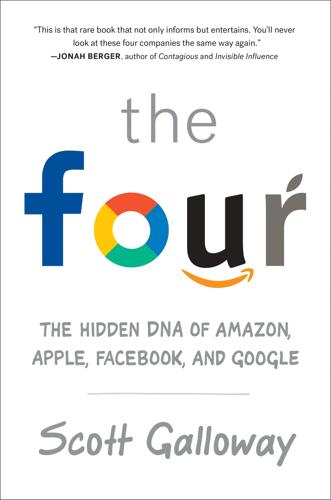
The Four: How Amazon, Apple, Facebook, and Google Divided and Conquered the World
by
Scott Galloway
Published 2 Oct 2017
Amazon Media Group alone will likely soon surpass Twitter’s 2016 revenue of $2.5 billion,62 making it one of the largest online media properties.63 Amazon Prime, the most nonexclusive club in America (44 percent of U.S. households64), is offering, for $99/year, free two-day shipping, two-hour shipping on select products (Amazon Now), and music and video streaming, including original content.65 Ideas for content are given the budget for a pilot, and then viewers are asked to vote online for which series get greenlighted. Amazon, like any sovereign superpower, pursues a triad strategy: air, land, and sea. Can you, Mr. Retailer, get your stuff to your consumer in an hour? No problem. Amazon can do it for you (for a fee), because it’s making the investment you can’t afford to make—warehouses run by robots near city centers, thousands of trucks, and dedicated cargo planes. Each day, four Boeing 767 cargo planes carry goods from Tracy, California, via an airport in nearby Stockton that was half the size three years ago, to a 1-million-square-foot warehouse that didn’t even exist until last year.66 In early 2016, Amazon was given a license by the Federal Maritime Commission to implement ocean freight services as an Ocean Transportation Intermediary.
…
Increasingly, robots will perform many of the functions of human employees, almost as well (and sometimes a lot better), without annoying requests to leave early to pick up their kid from karate. Amazon doesn’t talk publicly about robotics, one of its core competencies, as it realizes it would soon be fodder for late-night hosts and blustery political candidates. In 2012, Amazon quietly acquired Kiva Systems, a sophisticated warehouse robotics firm, for $775 million.90 In Star Wars, Obi-Wan Kenobi feels a dramatic disturbance in the force when the Imperial Army turns the Death Star on Alderaan and destroys the planet. When the acquisition of Kiva closed, every union member should have felt a similar disturbance. Entrepreneurs create jobs, right?

Four Futures: Life After Capitalism
by
Peter Frase
Published 10 Mar 2015
,” Mother Jones, May/June 2013. 6Brynjolfsson and McAfee, The Second Machine Age, pp. 7–8. 7Frey and Osborne, “The Future of Employment.” 8Martin Ford, Rise of the Robots: Technology and the Threat of a Jobless Future, New York: Basic Books, 2015. 9Katie Drummond, “Clothes Will Sew Themselves in Darpa’s Sweat-Free Sweatshops,” Wired.com, June 6, 2012. 10Leanna Garfield, “These Warehouse Robots Can Boost Productivity by 800%,” TechInsider.io, February 26, 2016. 11Ilan Brat, “Robots Step into New Planting, Harvesting Roles,” Wall Street Journal, April 23, 2015. 12Shulamith Firestone, The Dialectic of Sex: The Case for Feminist Revolution, New York: Farrar, Straus and Giroux, 1970. 13Soraya Chemaly, “What Do Artificial Wombs Mean for Women?”

Machine, Platform, Crowd: Harnessing Our Digital Future
by
Andrew McAfee
and
Erik Brynjolfsson
Published 26 Jun 2017
Acton, Brian, 140 additive manufacturing, 107; See also 3D printing Adore Me, 62 adults, language learning by, 68–69 advertising content platforms and, 139 data-driven decision making for, 48, 50–51 Facebook and, 8–9 radio airplay as, 148 advertising agencies, 48 advertising revenue Android as means of increasing, 166 Craigslist’s effect on, 139 free apps and, 162 print media and, 130, 132, 139 African Americans identifying gifted students, 40 and search engine bias, 51–52 aggregators, 139–40 AGI (artificial general intelligence), 71 agriculture automated milking systems, 101 drones and, 99–100 “food computers,” 272 machine learning and, 79–80 robotics and, 101–2 Airbnb future of, 319–20 hotel experience vs., 222–23 lack of assets owned by, 6–7 limits to effects on hotel industry, 221–23 network effects, 193 as O2O platform, 186 peer reviews, 209–10 rapid growth of, 9 as two-sided network, 214 value proposition compared to Uber, 222 Airline Deregulation Act, 181n airlines, revenue management by, 181–82 air travel, virtualization in, 89 Akerlof, George, 207, 210 albums, recorded music, 145 algorithms; See also data-driven decision making bias in systems, 51–53 and Cambrian Explosion of robotics, 95–96 comparing human decisions to, 56 O2O platforms and, 193 Quantopian and, 267–70 superiority to System 1 reasoning, 38–41 “algo traders,” 268; See also automated investing Alibaba, 6–8 Alipay, 174 AlphaGo, 4–6, 14, 74, 80 Alter, Lloyd, 90 Amazon automatic price changes, 47 bar code reader app, 162 data-driven product recommendations, 47 development of Web Services, 142–43 Mechanical Turk, 260 as stack, 295 warehouse robotics, 103 Amazon EC2, 143 Amazon Go, 90–91 Amazon S3, 143 Amazon Web Services (AWS), 75, 142–43 American Airlines (AA), 182 amino acid creation, 271–72 analog copies, digital copies vs., 136 “Anatomy of a Large-Scale Hypertextual Web Search Engine, The” (Page and Brin), 233 Anderson, Chris, 98–100 Anderson, Tim, 94 Andreessen, Marc on crowdfunding, 262–63 and Netscape, 34 as self-described “solutionist,” 297 on Teespring, 263–64 Android Blackberry vs., 168 contribution to Google revenue/profits, 204 iOS vs., 166–67 Angry Birds, 159–61 anonymity, digital currency and, 279–80 Antikythera mechanism, 66 APIs (application programming interfaces), 79 apophenia, 44n apparel, 186–88 Apple; See also iPhone acquiring innovation by acquiring companies, 265 and industrywide smartphone profits, 204 leveraging of platforms by, 331 Postmates and, 173, 185 profitability (2015), 204 revenue from paid apps, 164 “Rip, Mix, Burn” slogan, 144n as stack, 295 application programming interfaces (APIs), 79 AppNexus, 139 apps; See also platforms for banking, 89–90 demand curve and, 157–61 iPhone, 151–53 App Store, 158 Apter, Zach, 183 Aral, Sinan, 33 Archilochus, 60–61 architecture, computer-designed, 118 Aristophanes, 200 Arnaout, Ramy, 253 Arthur, Brian, 47–48 artificial general intelligence (AGI), 71 artificial hands, 272–75 artificial intelligence; See also machine learning current state of, 74–76 defined, 67 early attempts, 67–74 implications for future, 329–30 rule-based, 69–72 statistical pattern recognition and, 72–74 Art of Thinking Clearly, The (Dobelli), 43 arts, digital creativity in, 117–18 Ashenfelter, Orley, 38–39 ASICs (application-specific integrated circuits), 287 assets and incentives, 316 leveraging with O2O platforms, 196–97 replacement by platforms, 6–10 asymmetries of information, 206–10 asymptoting, 96 Atkeson, Andrew, 21 ATMs, 89 AT&T, 96, 130 August (smart door lock), 163 Austin, Texas, 223 Australia, 100 Authorize.Net, 171 Autodesk, 114–16, 119, 120 automated investing, 266–70 automation, effect on employment/wages, 332–33 automobiles, See cars Autor, David, 72, 101 background checks, 208, 209 back-office work, 82–83 BackRub, 233 Baidu, 192 Bakos, Yannis, 147n Bakunin, Mikhail, 278 Ballmer, Steve, 151–52 bandwagon effect, 217 banking, virtualization and, 89–90, 92 Bank of England, 280n bank tellers, 92 Barksdale, Jim, 145–46 barriers to entry, 96, 220 Bass, Carl, 106–7, 119–20 B2B (business-to-business) services, 188–90 Beastmode 2.0 Royale Chukkah, 290 Behance, 261 behavioral economics, 35, 43 Bell, Kristen, 261, 262 Benioff, Mark, 84–85 Benjamin, Robert, 311 Benson, Buster, 43–44 Berlin, Isiah, 60n Berners-Lee, Tim, 33, 34n, 138, 233 Bernstein, Michael, 260 Bertsimas, Dimitris, 39 Bezos, Jeff, 132, 142 bias of Airbnb hosts, 209–10 in algorithmic systems, 51–53 digital design’s freedom from, 116 management’s need to acknowledge, 323–24 and second-machine-age companies, 325 big data and Cambrian Explosion of robotics, 95 and credit scores, 46 and machine learning, 75–76 biology, computational, 116–17 Bird, Andrew, 121 Bitcoin, 279–88 China’s dominance of mining, 306–7 failure mode of, 317 fluctuation of value, 288 ledger for, 280–87 as model for larger economy, 296–97 recent troubles with, 305–7 and solutionism, 297 “Bitcoin: A Peer-to-Peer Electronic Cash System” (Nakamoto), 279 BlaBlaCar, 190–91, 197, 208 BlackBerry, 168, 203 Blitstein, Ryan, 117 blockchain as challenge to stacks, 298 and contracts, 291–95 development and deployment, 283–87 failure of, 317 and solutionism, 297 value as ledger beyond Bitcoin, 288–91 Blockchain Revolution (Tapscott and Tapscott), 298 Bloomberg Markets, 267 BMO Capital Markets, 204n Bobadilla-Suarez, Sebastian, 58n–59n Bock, Laszlo, 56–58 bonds, 131, 134 bonuses, credit card, 216 Bordeaux wines, 38–39 Boudreau, Kevin, 252–54 Bowie, David, 131, 134, 148 Bowie bonds, 131, 134 brand building, 210–11 Brat, Ilan, 12 Bredeche, Jean, 267 Brin, Sergey, 233 Broward County, Florida, 40 Brown, Joshua, 81–82 Brusson, Nicolas, 190 Burr, Donald, 177 Bush, Vannevar, 33 business conference venues, 189 Business Insider, 179 business processes, robotics and, 88–89 business process reengineering, 32–35 business travelers, lodging needs of, 222–23 Busque, Leah, 265 Buterin, Vitalik, 304–5 Byrne, Patrick, 290 Cairncross, Francis, 137 California, 208; See also specific cities Calo, Ryan, 52 Cambrian Explosion, 94–98 Cameron, Oliver, 324 Camp, Garrett, 200 capacity, perishing inventory and, 181 Card, David, 40 Care.com, 261 cars automated race car design, 114–16 autonomous, 17, 81–82 decline in ownership of, 197 cash, Bitcoin as equivalent to, 279 Casio QV-10 digital camera, 131 Caves, Richard, 23 Caviar, 186 CDs (compact discs), 145 cell phones, 129–30, 134–35; See also iPhone; smartphones Census Bureau, US, 42 central bankers, 305 centrally planned economies, 235–37 Chabris, Chris, 3 Chambers, Ephraim, 246 Champy, James, 32, 34–35, 37, 59 Chandler, Alfred, 309n Chase, 162 Chase Paymentech, 171 check-deposit app, 162 children, language learning by, 67–69 China Alibaba in, 7–8 concentration of Bitcoin wealth in, 306–7 and failure mode of Bitcoin, 317 mobile O2O platforms, 191–92 online payment service problems, 172 robotics in restaurants, 93 Shanghai Tower design, 118 Xiaomi, 203 Chipotle, 185 Choudary, Sangeet, 148 Christensen, Clay, 22, 264 Churchill, Winston, 301 Civil Aeronautics Board, US, 181n Civis Analytics, 50–51 Clash of Clans, 218 classified advertising revenue, 130, 132, 139 ClassPass, 205, 210 and economics of perishing inventory, 180–81 future of, 319–20 and problems with Unlimited offerings, 178–80, 184 and revenue management, 181–84 user experience, 211 ClassPass Unlimited, 178–79 Clear Channel, 135 clinical prediction, 41 Clinton, Hillary, 51 clothing, 186–88 cloud computing AI research, 75 APIs and, 79 Cambrian Explosion of robotics, 96–97 platform business, 195–96 coaches, 122–23, 334 Coase, Ronald, 309–13 cognitive biases, 43–46; See also bias Cohen, Steven, 270 Coles, John, 273–74 Collison, John, 171 Collison, Patrick, 171–74 Colton, Simon, 117 Columbia Record Club, 131 commoditization, 220–21 common sense, 54–55, 71, 81 companies continued dominance of, 311–12 continued relevance of, 301–27 DAO as alternative to, 301–5 decreasing life spans of, 330 economics of, 309–12 future of, 319–26 leading past the standard partnership, 323–26 management’s importance in, 320–23 markets vs., 310–11 as response to inherent incompleteness of contracts, 314–17 solutionism’s alternatives to, 297–99 TCE and, 312–15 and technologies of disruption, 307–9 Compass Fund, 267 complements (complementary goods) defined, 156 effect on supply/demand curves, 157–60 free, perfect, instant, 160–63 as key to successful platforms, 169 and open platforms, 164 platforms and, 151–68 and revenue management, 183–84 Stripe and, 173 complexity theory, 237 Composite Fund (D.
…
Bertram’s Mind, The” (AI-generated prose), 121 MySpace, 170–71 Naam, Ramez, 258n Nakamoto, Satoshi, 279–85, 287, 296–97, 306, 312 Nakamoto Institute, 304 Nappez, Francis, 190 Napster, 144–45 NASA, 15 Nasdaq, 290–91 National Association of Realtors, 39 National Enquirer, 132 National Institutes of Health, 253 National Library of Australia, 274 Naturalis Historia (Pliny the Elder), 246 natural language processing, 83–84 “Nature of the Firm, The” (Coase), 309–10 Navy, US, 72 negative prices, 216 Nelson, Ted, 33 Nelson, Theodore, 229 Nesbitt, Richard, 45 Netflix, 187 Netscape Navigator, 34 network effects, 140–42 defined, 140 diffusion of platforms and, 205–6 O2O platforms and, 193 size of network and, 217 Stripe and, 174 Uber’s market value and, 219 networks, Cambrian Explosion and, 96 neural networks, 73–74, 78 neurons, 72–73 Newell, Allen, 69 Newmark, Craig, 138 New Republic, 133 news aggregators, 139–40 News Corp, 170, 171 newspapers ad revenue, 130, 132, 139 publishing articles directly on Facebook, 165 Newsweek, 133 New York City Postmates in, 185 taxi medallion prices before and after Uber, 201 UberPool in, 9 New York Times, 73, 130, 152 Ng, Andrew, 75, 96, 121, 186 Nielsen BookScan, 293, 294 99Degrees Custom, 333–34 99designs, 261 Nixon, Richard, 280n Nokia, 167–68, 203 noncredentialism, 241–42 Norman, Robert, 273–74 nugget ice, 11–14 Nuomi, 192 Nupedia, 246–48 Obama, Barack, election of 2012, 48–51 occupancy rates, 221–22 oDesk, 188 Office of Personnel Management, US, 32 oil rigs, 100 on-demand economy, future of companies in, 320 online discussion groups, 229–30 online payment services, 171–74 online reviews, 208–10 O2O (online to offline) platforms, 185–98 business-to-business, 188–90 consumer-oriented, 186–88 defined, 186 as engines of liquidity, 192–96 globalization of, 190–92 interdisciplinary insights from data compiled by, 194 for leveraging assets, 196–97 and machine learning, 194 Opal (ice maker), 13–14 Open Agriculture Initiative, 272 openness (crowd collaboration principle), 241 open platforms curation and, 165 downsides, 164 importance of, 163–65 as key to success, 169 open-source software; See also Linux Android as, 166–67 development by crowd, 240–45 operating systems, crowd-developed, 240–45 Oracle, 204 O’Reilly, Tim, 242 organizational dysfunction, 257 Oruna, 291 Osindero, Simon, 76 Osterman, Paul, 322 Ostrom, Elinor, 313 outcomes, clear (crowd collaboration principle), 243 outsiders in automated investing, 270 experts vs., 252–75 overall evaluation criterion, 51 Overstock.com, 290 Owen, Ivan, 273, 274 Owen, Jennifer, 274n ownership, contracts and, 314–15 Page, Larry, 233 PageRank, 233 Pahlka, Jennifer, 163 Painting Fool, The, 117 Papa John’s Pizza, 286 Papert, Seymour, 73 “Paperwork Mine,” 32 Paris, France, terrorist attack (2015), 55 Parker, Geoffrey, 148 parole, 39–40 Parse.ly, 10 Paulos, John Allen, 233 payments platforms, 171–74 peer reviews, 208–10 peer-to-peer lending, 263 peer-to-peer platforms, 144–45, 298 Peloton, 177n Penthouse magazine, 132 People Express, 181n, 182 Perceptron, 72–74 Perceptrons: An Introduction to Computational Geometry (Minsky and Papert), 73 perishing/perishable inventory and O2O platforms, 186 and revenue management, 181–84 risks in managing, 180–81 personal drones, 98 perspectives, differing, 258–59 persuasion, 322 per-transaction fees, 172–73 Pew Research Center, 18 p53 protein, 116–17 photography, 131 physical environments, experimentation in development of, 62–63 Pindyck, Robert, 196n Pinker, Steven, 68n piracy, of recorded music, 144–45 Plaice, Sean, 184 plastics, transition from molds to 3D printing, 104–7 Platform Revolution (Parker, Van Alstyne, and Choudary), 148 platforms; See also specific platforms business advantages of, 205–11 characteristics of successful, 168–74 competition between, 166–68 and complements, 151–68 connecting online and offline experience, 177–98; See also O2O (online to offline) platforms consumer loyalty and, 210–11 defined, 14, 137 diffusion of, 205 economics of “free, perfect, instant” information goods, 135–37 effect on incumbents, 137–48, 200–204 elasticity of demand, 216–18 future of companies based on, 319–20 importance of being open, 163–65; See also open platforms and information asymmetries, 206–10 limits to disruption of incumbents, 221–24 multisided markets, 217–18 music industry disruption, 143–48 network effect, 140–42 for nondigital goods/services, 178–85; See also O2O (online to offline) platforms and perishing inventory, 180–81 preference for lower prices by, 211–21 pricing elasticities, 212–13 product as counterpart to, 15 and product maker prices, 220–21 proliferation of, 142–48 replacement of assets with, 6–10 for revenue management, 181–84 supply/demand curves and, 153–57 and unbundling, 145–48 user experience as strategic element, 169–74 Playboy magazine, 133 Pliny the Elder, 246 Polanyi, Michael, 3 Polanyi’s Paradox and AlphaGo, 4 defined, 3 and difficulty of comparing human judgment to mathematical models, 42 and failure of symbolic machine learning, 71–72 and machine language, 82 and problems with centrally planned economies, 236 and System 1/System 2 relationship, 45 Postmates, 173, 184–85, 205 Postmates Plus Unlimited, 185 Postrel, Virginia, 90 Pratt, Gil, 94–95, 97, 103–4 prediction data-driven, 59–60 experimentation and, 61–63 statistical vs. clinical, 41 “superforecasters” and, 60–61 prediction markets, 237–39 premium brands, 210–11 presidential elections, 48–51 Priceline, 61–62, 223–24 price/pricing data-driven, 47; See also revenue management demand curves and, 154 elasticities, 212–13 loss of traditional companies’ power over, 210–11 in market economies, 237 and prediction markets, 238–39 product makers and platform prices, 220 supply curves and, 154–56 in two-sided networks, 213–16 Principia Mathematica (Whitehead and Russell), 69 print media, ad revenue and, 130, 132, 139 production costs, markets vs. companies, 313–14 productivity, 16 products as counterpart to platforms, 15 loss of profits to platform providers, 202–4 pairing free apps with, 163 platforms’ effect on, 200–225 threats from platform prices, 220–21 profitability Apple, 204 excessive use of revenue management and, 184 programming, origins of, 66–67 Project Dreamcatcher, 114 Project Xanadu, 33 proof of work, 282, 284, 286–87 prose, AI-generated, 121 Proserpio, Davide, 223 Prosper, 263 protein p53, 116–17 public service, 162–63 Pullman, David, 131 Pullum, Geoffrey, 84 quantitative investing firms (quants), 266–70 Quantopian, 267–70 Quinn, Kevin, 40–41 race cars, automated design for, 114–16 racism, 40, 51–52, 209–10 radio stations as complements to recorded music, 148 in late 1990s, 130 revenue declines (2000–2010), 135 Ramos, Ismael, 12 Raspbian, 244 rationalization, 45 Raymond, Eric, 259 real-options pricing, 196 reasoning, See System 1/System 2 reasoning rebundling, 146–47 recommendations, e-commerce, 47 recorded music industry in late 1990s, 130–31 declining sales (1999-2015), 134, 143 disruption by platforms, 143–48 Recording Industry Association of America (RIAA), 144 redlining, 46–47 Redmond, Michael, 2 reengineering, business process, 32–35 Reengineering the Corporation (Hammer and Champy), 32, 34–35, 37 regulation financial services, 202 Uber, 201–2, 208 Reichman, Shachar, 39 reinforcement learning, 77, 80 Renaissance Technologies, 266, 267 Rent the Runway, 186–88 Replicator 2 (3D printer), 273 reputational systems, 209–10 research and development (R&D), crowd-assisted, 11 Research in Motion (RIM), 168 residual rights of control, 315–18 “Resolution of the Bitcoin Experiment, The” (Hearn), 306 resource utilization rate, 196–97 restaurants, robotics in, 87–89, 93–94 retail; See also e-commerce MUEs and, 62–63 Stripe and, 171–74 retail warehouses, robotics in, 102–3 Rethinking the MBA: Business Education at a Crossroads (Datar, Garvin, and Cullen), 37 revenue, defined, 212 revenue management defined, 47 downsides of, 184–85 O2O platforms and, 193 platforms for, 181–84 platform user experience and, 211 problems with, 183–84 Rent the Runway and, 187 revenue-maximizing price, 212–13 revenue opportunities, as benefit of open platforms, 164 revenue sharing, Spotify, 147 reviews, online, 208–10 Ricardo, David, 279 ride services, See BlaBlaCar; Lyft; Uber ride-sharing, 196–97, 201 Rio Tinto, 100 Robohand, 274 robotics, 87–108 conditions for rapid expansion of, 94–98 DANCE elements, 95–98 for dull, dirty, dangerous, dear work, 99–101 future developments, 104–7 humans and, 101–4 in restaurant industry, 87–89 3D printing, 105–7 Rocky Mountain News, 132 Romney, Mitt, 48, 49 Roosevelt, Teddy, 23 Rosenblatt, Frank, 72, 73 Rovio, 159n Roy, Deb, 122 Rubin, Andy, 166 Ruger, Ted, 40–41 rule-based artificial intelligence, 69–72, 81, 84 Russell, Bertrand, 69 Sagalyn, Raphael, 293n Saloner, Garth, 141n Samsung and Android, 166 and Linux, 241, 244 sales and earnings deterioration, 203–4 San Francisco, California Airbnb in, 9 Craigslist in, 138 Eatsa in, 87 Napster case, 144 Postmates in, 185 Uber in, 201 Sanger, Larry, 246–48 Sato, Kaz, 80 Satoshi Nakamoto Institute, 304 scaling, cloud and, 195–96 Schiller, Phil, 152 Schumpeter, Joseph, 129, 264, 279, 330 Scott, Brian, 101–2 second machine age origins of, 16 phase one, 16 phase two, 17–18 secular trends, 93 security lanes, automated, 89 Sedol, Lee, 5–6 self-checkout kiosks, 90 self-driving automobiles, 17, 81–82 self-justification, 45 self-organization, 244 self-selection, 91–92 self-service, at McDonald’s, 92 self-teaching machines, 17 Seychelles Trading Company, 291 Shanghai Tower, 118 Shapiro, Carl, 141n Shaw, David, 266 Shaw, J.

The Long History of the Future: Why Tomorrow's Technology Still Isn't Here
by
Nicole Kobie
Published 3 Jul 2024
Right now, the main role for bipedal, human-ish robots seems to be serving as research platforms, with entertainment or marketing gigs on the side, and the odd trial here and there in retail, security and logistics. That’s a smart move, as the logistics industry is understaffed, as it’s not often well paid and is usually hard work. However, it’s worth noting that many warehouse robots are already in use without looking anything like humans. Britain’s Ocado Technologies uses thousands of rolling box robots to shuffle grocery orders. And though Boston Dynamics began its work developing a warehouse robot with the bipedal Atlas, it slowly evolved from the humanoid form to Stretch, with its rolling design and AI to understand what boxes to pick and where to put them. When you’re reading about humanoid robotics developments, there’s one question to ask: autonomous or avatar?

Economic Dignity
by
Gene Sperling
Published 14 Sep 2020
Michael Sainato, “‘We Are Not Robots’: Amazon Warehouse Employees Push to Unionize,” Guardian, January 1, 2019, https://www.theguardian.com/technology/2019/jan/01/amazon-fulfillment-center-warehouse-employees-union-new-york-minnesota; and Noam Scheiber, “Inside an Amazon Warehouse, Robots’ Ways Rub Off on Humans,” New York Times, July 3, 2019, https://www.nytimes.com/2019/07/03/business/economy/amazon-warehouse-labor-robots.html. 47. Matthew Desmond, “American Capitalism Is Brutal; You Can Trace That to Slavery,” New York Times, August 14, 2019, https://www.nytimes.com/interactive/2019/08/14/magazine/slavery-capitalism.html. 48. Studs Terkel and Gary Bryner, “‘Working’ Then and Now: ‘I Didn’t Plan to Be a Union Guy,’” All Things Considered, NPR, September 29, 2016, audio, https://www.npr.org/templates/transcript/transcript.php?
…
Another occupation where the technological tools for ever greater supervision meet with management’s demands for hyperefficient quotas and production speeds is Amazon warehouse jobs.86 In early 2019, an employee told the Guardian that “pickers” were expected to grab four hundred items per hour, or one item every seven seconds.87 Warehouse workers spend ten-hour shifts standing on their feet the whole time.88 Every task is monitored inside the warehouse, and numerous former workers report that if associates were off task for an hour or for shorter periods several times, they would be immediately terminated.89 The demanding quotas under high-stress conditions have reportedly led some workers to urinate in trash cans for fear of missing their targets.90 Amazon has even patented a wristband that it could in the future use to track employees’ every move and let their supervisors know if and when they move an inch that is not in the aim of packing boxes.91 Founding president of the American Federation of Labor Samuel Gompers in 1904 said, “We don’t love to work only. The mule works, too.”92 Echoing that line, Rashad Long, a former picker at the Staten Island Amazon warehouse, said, “We are not robots. We are human beings. We cannot come into work after only four hours of sleep and be expected to be fully energized and ready to work. That’s impossible. I feel like all the company cares about is getting their products out to the customers as quickly as humanly possible, no matter what that means for us workers in the end.”93 Sociologist Matthew Desmond traces the origins of hyper-microefficient quota-oriented management to the ultimate degradation and treatment of people as only means to an end: slavery and its use in the production of cotton.

Machines of Loving Grace: The Quest for Common Ground Between Humans and Robots
by
John Markoff
Published 24 Aug 2015
Davis became enthused about the idea and was an early funder of the project. Shakey was key because it was one of just a handful of major artificial intelligence projects that began in the 1960s, causing an explosion of early work in AI that would reverberate for decades. Today Shakey’s original DNA can be found in everything from the Kiva warehouse robot and Google’s autonomous car to Apple’s Siri intelligent assistant. Not only did it serve to train an early generation of researchers, but it would be their first point of engagement with technical and moral challenges that continue to frame the limits and potential of AI and robotics today. Many people believed Shakey was a portent for the future of AI.
…
The ability to quickly recognize objects among dozens of possibilities and pick them up from different positions remains a uniquely human skill. But for how long? It doesn’t take much imagination to see Baxter, or a competitor from similar companies like Universal Robots or Kuka, working in an Amazon warehouse alongside teams of mobile Kiva robots. Such lights-out warehouses are clearly on the horizon, whether they are made possible by “friendly” robots like Baxter or by more impersonal systems like the ones Google’s new robotics division is allegedly designing. As the debates over technology and jobs reemerged in 2012 in the United States, many people were eager to criticize Brooks’s Baxter and its humanoid design.
…
Hanging in the meat locker waiting to be deployed to the respective teams, however, they looked poised to spring into action with human nimbleness. On a quiet afternoon it evoked a scene from the 2004 movie I, Robot, where a police detective played by actor Will Smith walks, gun drawn, through a vast robot warehouse containing endless columns of frozen humanoid robots awaiting deployment. In a close-up shot, the eyes of one sinister automaton focus on the moving detective before it springs into action. Decades earlier, when Raibert began his graduate studies at MIT, he had set out to study neurophysiology. One day he followed a professor back to the MIT AI Lab.

Amazon Unbound: Jeff Bezos and the Invention of a Global Empire
by
Brad Stone
Published 10 May 2021
Clark was a leading contender for the job. A major part of his candidacy was his bid to acquire the North Reading, Massachusetts–based robotics startup, Kiva Systems, which made the Roomba-like mobile robots. Instead of pickers walking a dozen miles a day to select items from shelves spread out over giant warehouses, Kiva robots maneuvered portable containers of merchandise around the building, an orchestral symphony conducted by the invisible hand of software. The idea behind Kiva was born from the same disaster that had inspired Doug Herrington to propose Amazon Fresh. After Webvan went bankrupt, one of its executives, Mick Mountz, realized that e-commerce companies were essentially paying people to spend two-thirds of their time walking.
…
Mountz believed Amazon was trying to incite skepticism about the startup in the tech industry. Then Amazon made a low-ball offer to buy Kiva over the spring of 2011. Mountz rejected the proposal. At the same time, Amazon began quietly evaluating other robotics companies and asking them to build a mobile warehouse robot. The effort failed though, and Amazon increased its offer for Kiva. An investment banker who represented Kiva said that the subsequent talks “were the most painful negotiations I’ve ever been through,” with Amazon characteristically arguing every point. After the $775 million deal closed in early 2012, Kiva execs visited Seattle and saw one of Amazon’s unsuccessful robot prototypes parked in a conference room.
…
Amazon needed to add fresh workers amid the overlapping challenges of high absenteeism and exploding customer demand while changing, on the fly, many of the deeply ingrained processes in the vast Amazon supply chain. In this respect, Amazon was in an enviable position. Dave Clark, the bespectacled former middle school band teacher, had proven himself uniquely capable of developing large, complex systems, like the network of warehouses using Kiva robots and the in-house transportation division, Amazon Logistics, which was now responsible for approximately half of all Amazon deliveries globally and two-thirds in the U.S. If supply chains win wars, as the old military proverb went, Bezos had one of the most accomplished generals in the world by his side.

The Road to Conscious Machines
by
Michael Wooldridge
Published 2 Nov 2018
Thus, all the program ‘controlling’ the arm has to do is to find the right order of such actions to carry out the required task. It doesn’t need to worry about the messy business of actually carrying them out. But think about a robot in the physical world trying to undertake this action, perhaps in a warehouse. Here, the robot would have to be able to identify the two objects in question, successfully execute a complex locomotion problem to get the arm to the right place and grasp the relevant object. Even the final part of this ‘atomic’ action, grasping the relevant object, is, in reality, far from trivial – getting robots to manipulate even simple objects in the real world is phenomenally difficult, and remains a significant challenge to the present day.
…
And imagine how you would feel if your annual appraisal was with a computer program, perhaps even a program that could decide whether to fire you. Somewhat cynically, I am tempted to suggest that we probably shouldn’t be too concerned about these problems, though, because the jobs in question won’t be around for very long: pretty soon they will be fully automated by AI and robotics. (Amazon is investing heavily in warehouse robotics.) The prospect of a large proportion of the world’s working population employed in jobs like this is not an attractive one, although, as I hope should now be clear, it is nothing fundamentally new – it’s an AI dimension added to trends that began back in the Industrial Revolution. And of course, many people in the working world today are employed in far worse conditions than those of the Amazon warehouse I describe above.

Fulfillment: Winning and Losing in One-Click America
by
Alec MacGillis
Published 16 Mar 2021
It sprawled over one million square feet—equivalent to eighteen football fields—a boxy, light gray building with blank walls, nearly a third of a mile long and surrounded by 1,900 parking spots. Large black letters on its side read: AMAZON FULFILLMENT It was an arresting sight, those two words. It was, on one level, simply a term of the trade. The company called its primary warehouses, the cavernous buildings where workers and robots selected goods from racks and workers packed them for shipment, “fulfillment centers.” They were, after all, where customer orders were fulfilled. There were also the “sortation centers,” which were both smaller and smaller in number, where packages already assembled and addressed were sorted for delivery in a given area.
…
The leaders rose one by one: Audio of event recorded by author. the Advils that Amazon provided in vending machines: Heather Long, “Amazon’s $15 Minimum Wage Doesn’t End Debate over Whether It’s Creating Good Jobs,” The Washington Post, October 5, 2018. making their own existence more robotic: Noam Scheiber, “Inside an Amazon Warehouse, Robots’ Ways Rub Off on Humans,” The New York Times, July 3, 2019. two patents for a wristband: Ceyland Yeginsu, “If Workers Slack Off, a Wristband Will Know. (And Amazon Has a Patent For It.),” The New York Times, February 1, 2018. on the verge of building a new rail transit line: Alec MacGillis, “The Third Rail,” Places Journal, March 2016.

Always Day One: How the Tech Titans Plan to Stay on Top Forever
by
Alex Kantrowitz
Published 6 Apr 2020
“Amazon.com to Acquire Manufacturer of Robotics.” New York Times. New York Times, March 19, 2012. https://dealbook.nytimes.com/2012/03/19/amazon-com-buys-kiva-systems-for-775-million/. Amazon placed roughly 15,000 robots in its FCs by 2014: Seetharaman, Deepa. “Amazon Has Installed 15,000 Warehouse Robots to Deal with Increased Holiday Demand.” Business Insider. Business Insider, December 1, 2014. https://www.businessinsider.com/r-amazon-rolls-out-kiva-robots-for-holiday-season-onslaught-2014-12. and had 30,000 in operation by 2015: Levy, Nat. “Chart: Amazon Robots on the Rise, Gaining Slowly but Steadily on Human Workforce.”

Human + Machine: Reimagining Work in the Age of AI
by
Paul R. Daugherty
and
H. James Wilson
Published 15 Jan 2018
These models allow engineers to be more creative in the questions they ask and allow for the emergence of previously hidden inefficiencies—with the potential for significant savings of time and money. The Warehouse That’s Packed Today, it’s not uncommon to walk into a modern warehouse or distribution center and see robots rolling along the floor. (For a small sampling of these smarter supply chain and warehouse bots, see the sidebar “AI in Warehouse and Logistics.”) AI in Warehouse and Logistics Artificial intelligence is taking on the task of warehouse navigation and inventory and changing the way people think about warehouse design. When Amazon acquired Kiva Robots in 2012, it signaled that the mobile bots zipping around Amazon’s warehouses were a key to their fulfillment advantage.
…
If it won’t, the robot alerts a central control system, which automatically redirects that box to a shelf where it will fit. The bots zip around the warehouse floor at twenty-five miles per hour, carrying, sensing, and adapting as they go. The difference between a traditional warehouse and one with Symbotic’s robots is stark. Usually, trucks unload pallets of products at the dock; there’s an area where pallets are stored until people can unpack them, and conveyor belts move cases of goods to various parts of the warehouse. But because the Symbotic robots immediately remove products from pallets and put them on shelves, there’s no need to reserve space for storing pallets. And there’s no need for conveyor belts either.
…
The shelves are carried by squat, rolling robots destined to bring the goods to the worker, who plucks the items off the shelves and puts them in a box to ship. Computer vision helps the robots know where they are in the warehouse, sensors keep them from running into each other, and machine-learning algorithms help them determine the best paths and right-of-ways on a warehouse floor full of other robots. The human worker no longer needs to walk miles a day to retrieve goods for packaging. In another example of embodiment, drones are being tested to deliver health care, on demand, to remote parts of Rwanda, out of reach of traditional medical options. A company called Zipline is pioneering the technology, targeting one of the leading causes of death—postpartum hemorrhage—with a delivery of blood for transfusion.12 Drones have become a particularly interesting application of AI: computer vision and smart algorithms process video in real time, thereby allowing people to extend their vision and delivery capabilities up into the air and over miles of potentially impassable terrain.

Thinking Machines: The Inside Story of Artificial Intelligence and Our Race to Build the Future
by
Luke Dormehl
Published 10 Aug 2016
While there was still a use for horses ploughing fields, pulling wagons and working in pits, the arrival of the internal combustion engine had driven down costs far enough that the wage for this work was so low it often wouldn’t even pay for a horse’s feed. As machinery became more and more advanced, this trend picked up speed through the twentieth century and beyond. Thanks to dual advances in both Artificial Intelligence and its sibling field of robotics, automation is now sweeping across more industries than ever. In warehouses, robots are increasingly used to select and box up products for shipping. In the service industry, robots are used to prepare food – and even serve it to customers. To whit, the San Francisco startup Momentum Machines, Inc. has built a robot capable of preparing hamburgers. Current models can prepare around 360 per hour, and are capable of doing everything from grinding the meat for the burgers and toasting the buns to adding fresh ingredients such as tomatoes, onions and pickles.
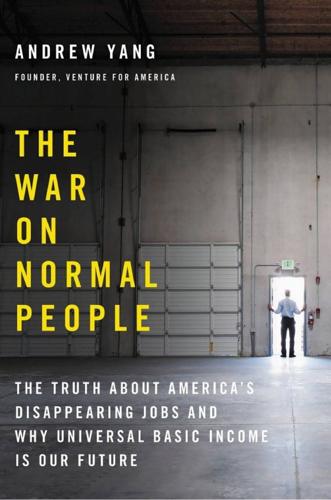
The War on Normal People: The Truth About America's Disappearing Jobs and Why Universal Basic Income Is Our Future
by
Andrew Yang
Published 2 Apr 2018
Some might say, “It’s okay that the malls and main streets are closing, because you’ll still need warehouse workers and truck drivers to deliver the goods plus web designers for all of the e-commerce storefronts.” Yet all of the new roles are likely to be located far from the mall and other population centers. Over time the warehouse workers will be replaced by a handful of technicians who supervise and operate warehouse robots and the delivery drivers will be replaced by a handful of logistics specialists. We can celebrate the 200 new robot supervisors in suburban California and the 100 new logistics specialists in Memphis and the 50 new web designers in Seattle and say, “Hey, we didn’t know we’d need these 350 college-educated people—hooray!”

Ghost Road: Beyond the Driverless Car
by
Anthony M. Townsend
Published 15 Jun 2020
As the Seattle Times reported, “illustrations that accompany the patent . . . show a cage-like enclosure around a small work space sitting atop the kind of robotic trolleys that now drive racks of shelves around Amazon warehouses.” It’s as jaw-dropping a metaphor for an undesirable, yet possibly unavoidable, urban future as you’re likely to find. Thankfully, Amazon shelved its human-cage plans. Instead, many of the company’s fulfillment-center workers now don a less repressive protective device to ward off warehouse droids, called the Robotic Tech Vest. By signaling a human presence to nearby machines, this ghost road armor allows more than 125,000 fulfillment-center workers to commingle with some 100,000 warehouse droids, who quickly map out human habitats. “In the past, associates would mark out the grid of cells where they would be working in order to enable the robotic traffic planner to smartly route around that region,” explains an Amazon robotics executive.
…
Streets,” New York Times, October 28, 2019, https://www.nytimes.com/2019/10/27/nyregion/nyc-amazon-delivery.html. 136Amazon cornered the market: Scott Kirsner, “Acquisition Puts Amazon Rivals in Awkward Spot,” Boston Globe, December 1, 2013, https://www.bostonglobe.com/business/2013/12/01/will-amazon-owned-robot-maker-sell-tailer-rivals/FON7bVNKvfzS2sHnBHzfLM/story.html. 136100,000 of these diligent devices were reporting: Nick Wingfield, “As Amazon Pushes Forward with Robots, Workers Find New Roles,” New York Times, September 10, 2017, https://www.nytimes.com/2017/09/10/technology/amazon-robots-workers.html. 137cramming 50 percent more inventory: Ananya Bhattacharya, “Amazon Is Just Beginning to Use Robots in Its Warehouses and They’re Already Making a Huge Difference,” Quartz, June 17, 2016, https://qz.com/709541/amazon-is-just-beginning-to-use-robots-in-its-warehouses-and-theyre-already-making-a-huge-difference/. 137bots that slide along tracks suspended: Fiona Hartley, “Over 1,000 Robots Pack Groceries in Ocado’s Online Shopping Warehouse,” Dezeen, June 6, 2018, https://www.dezeen.com/2018/06/06/video-ocado-warehouse-shopping-robots-movie/. 137China’s JD.com employs a freakish spiderlike robot: JD.com, “Tour of the Warehouse of the Future,” YouTube video, May 11, 2017, https://www.youtube.com/watch?v=24T14VP5vVs. 137will face excruciating pressure to control carbon emissions: OECD/ITF, ITF Transport Outlook 2017 (Paris: OECD Publishing, 2017), https://www.ttm.nl/wp-content/uploads/2017/01/itf_study.pdf. 137“that incessantly revolutionizes the economic structure”: Joseph Schumpeter, Capitalism, Socialism, and Democracy (London, UK: Routledge, 1942), 82–83. 138Domino’s Pizza outlet averages a mere 1,500 square feet: United States Securities and Exchange Commission, Annual Report Pursuant to Section 13 or 15(d): Domino’s Pizza, December 29, 2013, p. 4, https://www.sec.gov/Archives/edgar/data/1286681/000119312514066092/d661353d10k.htm. 138cardboard pizza, scant sauce, and synthetic-tasting: Allison P.

Rise of the Robots: Technology and the Threat of a Jobless Future
by
Martin Ford
Published 4 May 2015
In theory, the encroachment of online retailers should not necessarily destroy jobs but, rather, would transition them from traditional retail settings to the warehouses and distribution centers used by the online companies. However, the reality is that once jobs move to a warehouse they become far easier to automate. Amazon purchased Kiva Systems, a warehouse robotics company in 2012. Kiva’s robots, which look a bit like huge, roving hockey pucks, are designed to move materials within warehouses. Rather than having workers roam the aisles selecting items, a Kiva robot simply zips under an entire pallet or shelving unit, lifts it, and then brings it directly to the worker packing an order.

AI Superpowers: China, Silicon Valley, and the New World Order
by
Kai-Fu Lee
Published 14 Sep 2018
Adjustments to the robot’s underlying algorithms can sometimes be made remotely, but any mechanical hiccups require hands-on work with the machine. All these frictions will slow down the pace of robotic automation. This is not to say that China’s manual laborers are safe. Drones for deploying pesticides on farms, warehouse robots for unpacking trucks, and vision-enabled robots for factory quality control will all dramatically reduce the jobs in these sectors. And Chinese companies are indeed investing heavily in all of the above. The country is already the world’s top market for robots, buying nearly as many as Europe and the Americas combined.

Driverless: Intelligent Cars and the Road Ahead
by
Hod Lipson
and
Melba Kurman
Published 22 Sep 2016
The robotic density of the U.S. automotive industry is higher than that of any other industry, roughly 1,100 robots per 10,000 human employees.6 Each year, automotive companies hire more robots as the robotic density of the global automotive industry continues to grow at a rapid clip, a rate of 27 percent each year. While the car-making process might be heavily robotized, however, driverless cars would not recognize their brawny, simpleminded cousins on the assembly lines as fellow robots. Hard-working manufacturing, assembly line, and warehouse robots are neither mobile nor autonomous. They’re bolted into place, and carefully programmed by human technicians to do a specific task in a highly structured setting. If their environment throws them a curve ball, they can’t deviate from the script, nor are they capable of learning from previous experience.

The Stack: On Software and Sovereignty
by
Benjamin H. Bratton
Published 19 Feb 2016
Mail Online, March 1, 2013, http://www.dailymail.co.uk/news/article-2286227/Amazons-human-robots-Is-future-British-workplace.html. Amazon also purchased Kiva Systems, a leading manufacturer of warehouse automation systems. See Scott Kirsner, “Amazon Buys Warehouse Robotics Start-Up Kiva Systems for $775 Million,” Boston.com, March 19, 2012, http://www.boston.com/business/technology/innoeco/2012/03/amazon_buys_warehouse_robotics.html. 65. Stowe Boyd, “If Amazon Is the Future of Work, Then Be Afraid,” Gigaom Research, February 22, 2013, http://research.gigaom.com/2013/02/if-amazon-is-the-future-of-work/. 66. This dynamic is the central problem drawn out in Jaron Lanier in Who Owns the Future?

Utopias: A Brief History From Ancient Writings to Virtual Communities
by
Howard P. Segal
Published 20 May 2012
Penn, “The Pessimism Index,” Time, 178 (July 11, 2011), 36–37. 53 See Gina Kolata, “First Mammal Clone Dies; Dolly Made Science History,” New York Times, February 15, 2003, A4. 54 See Rob Stein, “Glowing Monkeys Raise Ethics Concerns,” Washington Post, reprinted in Boston Globe, May 28, 2009, A7. 55 See Rob Stein, Washington Post, “Mix-ups Spur Calls for Regulation of Genetic Test Kits,” Boston Globe, July 19, 2010, A8. 56 See Francis S. Collins, “The Cancer You Can Beat,” Parade, June 20, 2010, 8, 10. 57 See Sally McGrane, “Social Norms: Online Dating and Genetics,” Time, 173 (June 29, 2009), 47. 58 Scott Kirsner, “Innovation Economy: Kiva, The Warehouse Robot Company,” Boston Sunday Globe, November 28, 2010, G1, G4; and Carolyn Y. Johnson, “Robots May Furnish Lesson in Human Trust,” Boston Globe, July 15, 2010, A1, A6. See also Peter W. Singer, “The Unmanned Mission,” Fortune, 161 (March 1, 2010), S2; Associated Press, “Robot Performs Wedding Ceremony in Tokyo,” Boston Globe, May 17, 2010, A3; and Kirsner, “You, Robot,” Boston Sunday Globe, May 30, 2010, G1, G4.

The Internet Is Not the Answer
by
Andrew Keen
Published 5 Jan 2015
But, like Google, Amazon is also massively investing in automated labor technology, with Jeff Bezos telling his investors in May 2014 that he expected to be using 10,000 robots in its fulfillment centers by the beginning of 2015.34 Thus in 2012 Amazon paid $775 million for Kiva Systems, a maker of robots for servicing warehouses. Kiva robots—which, by the way, are already being used by the Amazon-owned online shoe store Zappos (in Zappos’s hierarchy-free holacracy, all robots are presumably equal)—can retrieve and pick 200–400 items an hour. As George Packer warns in a 2014 New Yorker piece, “Amazon’s warehouse jobs are gradually being taken over by robots.”

The Future Is Asian
by
Parag Khanna
Published 5 Feb 2019
Amazon and Alibaba both have robots sorting millions of products across their facilities. Universal Robots (UR), a Danish manufacturer of lightweight multitasking robotic arms, reports double-digit annual growth in Asia. GreyOrange, a robotics company based in Singapore and New Delhi, has two warehouse robots named Butler and Sorter that stock shelves and load hundreds of thousands of parcels per day, eliminating the cheap manual labor on which India’s logistics sector has thrived for so long. GreyOrange’s partnership with Flipkart (originally backed by SoftBank, Tiger Global Management, and Tencent but now owned mostly by Walmart) will help it survive against Amazon’s aggressive incursion into India, allowing managers to focus less on head count and more on quality control.

The Lonely Century: How Isolation Imperils Our Future
by
Noreena Hertz
Published 13 May 2020
, MIT News, 4 May 2020, http://news.mit.edu/2020/how-many-jobs-robots-replace-0504. 81 As economist Henry Siu put it in 2015, ‘The personal computer existed in the ’80s, but you don’t see any effect on office and administrative-support jobs until the 1990s, and then suddenly, in the last recession, it’s huge. So today you’ve got checkout screens and the promise of driverless cars, flying drones, and little warehouse robots. We know that these tasks can be done by machines rather than people. But we may not see the effect until the next recession, or the recession after that.’ Derek Thompson, ‘When Will Robots Take All the Jobs?’, The Atlantic, 31 October 2016, https://www.theatlantic.com/business/archive/2016/10/the-robot-paradox/505973/.

Army of None: Autonomous Weapons and the Future of War
by
Paul Scharre
Published 23 Apr 2018
These developments are part of a deeper technology trend: the rise of artificial intelligence (AI), which some have called the “next industrial revolution.” Technology guru Kevin Kelly has compared AI to electricity: just as electricity brings objects all around us to life with power, so too will AI bring them to life with intelligence. AI enables more sophisticated and autonomous robots, from warehouse robots to next-generation drones, and can help process large amounts of data and make decisions to power Twitter bots, program subway repair schedules, and even make medical diagnoses. In war, AI systems can help humans make decisions—or they can be delegated authority to make decisions on their own.

Platform Capitalism
by
Nick Srnicek
Published 22 Dec 2016

WTF?: What's the Future and Why It's Up to Us
by
Tim O'Reilly
Published 9 Oct 2017
You don’t need a salesperson to help you understand which product is the best—Amazon has built software that lets customers rate the products and write reviews to tell you which are best, and then feeds that reputation information into their search engine so that the best products naturally come out on top. You don’t need a cashier to help you check out—software lets you do that yourself. Amazon’s use of automation goes far beyond the use of robots in its warehouses (though Amazon Robotics is one of the leaders in the field). Every function the company performs is infused with software, organizing its workers, its suppliers, and its customers into an integrated workflow. Of course, every corporation is a kind of hybrid of man and machine, created and operated by humans to augment their individual efforts.

The Second Machine Age: Work, Progress, and Prosperity in a Time of Brilliant Technologies
by
Erik Brynjolfsson
and
Andrew McAfee
Published 20 Jan 2014
There’s a lot of evidence to support his view. The volume and variety of robots in use at companies is expanding rapidly, and innovators and entrepreneurs have recently made deep inroads against Moravec’s paradox.30 Kiva, another young Boston-area company, has taught its automatons to move around warehouses safely, quickly, and effectively. Kiva robots look like metal ottomans or squashed R2-D2s. They scuttle around buildings at about knee-height, staying out of the way of humans and one another. They’re low to the ground so they can scoot underneath shelving units, lift them up, and bring them to human workers. After these workers grab the products they need, the robot whisks the shelf away and another shelf-bearing robot takes its place.

Augmented: Life in the Smart Lane
by
Brett King
Published 5 May 2016
Even with advanced WMS software automation systems like Manhattan Associates, HighJump or RedPrairie that can optimise the efficiencies of the workforce, order fulfilment costs remained stubbornly high, especially in low margin, high product mix orders like groceries. Kiva’s solution was groundbreaking and simple, and spawned from the answer to the question: Why have people deliver products to and from shelves if the shelves can come to them? Figure 4.6: Kiva’s automated guided vehicle system for warehouse management (Credit: Kiva/Amazon) Kiva created robots that locate the closest automated guided vehicle (robot) to the item that needs to be moved and directs the bot to retrieve the item. The mobile robots drive around the warehouse by navigating a series of barcode stickers on the floor. The robots have enough AI and sensors to avoid running into each other and obstacles.
…
Amazon offers us a glimpse of something that we’ll see often in the future: automation technology reduces the need for and number of low-skilled workers and highly paid sales and marketing employees while creating an entirely new division within the company of highly skilled roboticists and AI software workers. We said earlier that every person and company needs a robot strategy. Who are the early leaders in robot strategy and what are they doing? We’ve seen Amazon embrace robotics with its Kiva warehouse system acquisition. Google acquired eight robotics companies and put them all in a former NASA blimp hangar13 like a giant child’s playroom and made what is probably the most cinematic yet confusing move, since the military nature of the robots seems at odds with Google’s core business and its civilian focus on search. Apple’s main outsourced manufacturer, Foxconn (actually Hon Hai, headquartered in Taiwan) is realising that the only way it is going to be able to continue to keep Apple’s manufacturing business is by upgrading its factories to use more and more robots to make up for ever-increasing labour costs in China, as the number of Chinese aged 15 to 59 (the traditional retirement age) shrinks by 3 to 4 million a year.

Visual Thinking: The Hidden Gifts of People Who Think in Pictures, Patterns, and Abstractions
by
Temple Grandin, Ph.d.
Published 11 Oct 2022
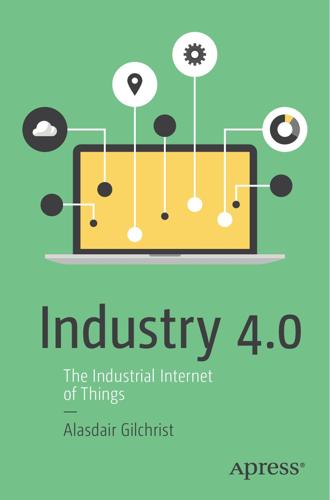
Industry 4.0: The Industrial Internet of Things
by
Alasdair Gilchrist
Published 27 Jun 2016
Robots have computation, network, and physical components to enable them to run software to do their tasks, such as to read sensors data, apply algorithms, and send control information to servomotors and actuators that control the robots arms, levers, and mechanisms. Robots also communicate with back-end servers in the operations and management domain and with safety devices on the assembly line. An example of this is that in some deployments, such as in stock handling in warehouses where robots retrieve or return stock from shelves and bins, robots work very quickly. They move at tremendous speeds, performing mechanical arm actions in a blur, and do not tire or need rest breaks, so they outperform humans in every regard. However, robots and humans do not always work together safely, and it is necessary then if a human comes into the working vicinity of a robot that the robot must slow down and perform its actions at a speed compatible with humans.

The 100-Year Life: Living and Working in an Age of Longevity
by
Lynda Gratton
and
Andrew Scott
Published 1 Jun 2016
A routine cognitive task would be a bank teller, while a sorter on an assembly line would be an example of a routine manual task. It is jobs that involve routine tasks that have already been substantially substituted by technology. Because routine tasks can be described by a specific set of instructions, they can be codified in a program for computers and robots to perform. Take a look in most Amazon warehouses, where robots move inventory from the shelves to Amazon packers while at the same time sending a constant stream of data to a central system about which products are ordered. The process takes place continually without intervention or decision-making by humans. This has been made possible by rapid technological innovations in machine learning and the accuracy of sensors.

The Best Business Writing 2013
by
Dean Starkman
Published 1 Jan 2013

Rage Inside the Machine: The Prejudice of Algorithms, and How to Stop the Internet Making Bigots of Us All
by
Robert Elliott Smith
Published 26 Jun 2019
In these enormous windowless structures ‘stock pickers’ (they are not called ‘employees’) are monitored by cameras, while electronic wristbands algorithmically control their movements by telling them where to go and what to select from the millions of algorithmically ordered products placed to optimize workers’ movements between shelves. Toilet and lunch breaks are timed, emails are constantly monitored and employee performance is measured. Although since dropped, in 2016, the company even patented a cage atop a trolley to carry workers into areas of the warehouse where robotic workers operate.4 It’s hard to imagine a more dehumanized or dehumanizing vision of a workplace, but at least in the real world we can see and identify abuse and exploitation and hopefully correct it. But what happens when we can’t actually see what’s going on, much like the trick Vaucanson played on the public with the hidden guise of his Digesting Duck, or the fraud committed by von Kempelen with the chess master hidden inside his chess playing Turk?

The People's Republic of Walmart: How the World's Biggest Corporations Are Laying the Foundation for Socialism
by
Leigh Phillips
and
Michal Rozworski
Published 5 Mar 2019
Around the start of this decade, Amazon’s top operations managers determined that its warehouses were still too inefficient, and so they themselves went shopping for something better. In 2012 Amazon bought Kiva Systems, a robotics firm, and it now uses robots to put its entire shelving system into motion. Amazon’s updated, even more automated fulfillment centers now feature shelves that move and humans who stand in place—the opposite of what a warehouse normally looks like. Flat, Roomba-like robots rove the warehouse floor along designated pathways. They can lift entire shelving units just off the ground and maneuver them along the same pathways to “picking stations.” These are small designated areas where human order pickers stand, taking items from storage bins and putting them into order bins as shelving units come and go.
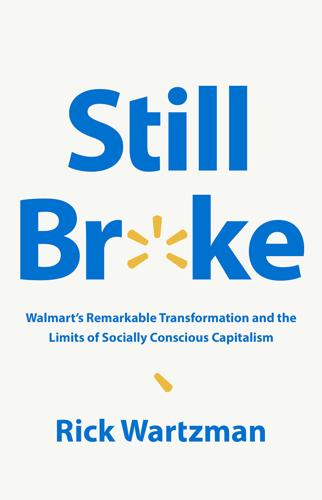
Still Broke: Walmart's Remarkable Transformation and the Limits of Socially Conscious Capitalism
by
Rick Wartzman
Published 15 Nov 2022
Under his direction, the company would, in time, winnow its foreign presence; buy the e-commerce site Jet.com for more than $3 billion—and then shut it down; otherwise rev up its online business by introducing new services and expanding its stable of third-party sellers; unveil a subscription program, akin to Amazon Prime, called Walmart+; build local fulfillment centers—compact warehouses powered by robotics and artificial intelligence—right in its stores; dive into digital advertising; cultivate customers on TikTok, the viral video app; venture into the metaverse and the worlds of cryptocurrency and nonfungible tokens; deliver products by drone and driverless truck; put groceries right into people’s fridges while they weren’t home; open health clinics and offer medical insurance; launch a financial technology startup; buy the menswear company Bonobos; buy and sell the women’s apparel company ModCloth; beef up its fashion brands by hiring a creative director, Brandon Maxwell, who, as Vogue observed, was in a coterie of designers who typically took on engagements in Paris or Milan, not Bentonville; and much, much more.

The Fourth Age: Smart Robots, Conscious Computers, and the Future of Humanity
by
Byron Reese
Published 23 Apr 2018

A World Without Work: Technology, Automation, and How We Should Respond
by
Daniel Susskind
Published 14 Jan 2020
Amazon has filed patents for “drone nests,” large beehive-like buildings designed to house fleets of autonomous flying delivery robots, and for “airborne fulfillment centers,” airships that cruise at forty-five thousand feet full of products ready for drone delivery.23 Airborne robotic delivery might sound fanciful, and Amazon’s patents may seem just an attempt to stir up some attention. Yet it is worth remembering that Amazon is among the most advanced users of robotics, with a fleet of over one hundred thousand ground-based robots across its warehouses.24 And some robots today are already capable of accomplishing remarkable physical feats, like opening doors and climbing walls, ascending stairs and landing backflips, carrying cables over harsh terrain and knotting ropes together in midair.25 Meanwhile, the global population of industrial robots is rising steadily: the International Federation of Robotics, a trade association, anticipates there will be more than three million of them in operation in 2020, double the number in 2014.27 Figure 5.1: Global Stock of Industrial Robots (000’s)26 The car manufacturing industry provides a good case study of task encroachment unfolding in the industrial world.

Uncanny Valley: A Memoir
by
Anna Wiener
Published 14 Jan 2020

AI 2041: Ten Visions for Our Future
by
Kai-Fu Lee
and
Qiufan Chen
Published 13 Sep 2021
Today, robotic computer vision is mature, so it can be applied to safety enhancements for the elderly population (imagine robot-assisted “life alert”), assembly line visual inspection, and anomaly detection for energy and mass-transportation industries. In parallel, mobile platforms such as autonomous mobile robots (AMRs) and autonomous forklifts can navigate around indoor spaces, allowing a robot to “see” obstacles, plan its path, and move cargo in a warehouse. Today robotic arms can grasp, manipulate, and move rigid objects in applications like welding, assembling lines, and object picking in e-commerce distribution centers. These robots will gradually become more capable. Computer vision using cameras and other sensors (such as LiDAR) will be an integral part of smart cities and autonomous vehicles.

New Dark Age: Technology and the End of the Future
by
James Bridle
Published 18 Jun 2018

Red Mars
by
Kim Stanley Robinson
Published 23 Oct 1992
I won’t do it. I’ll fix things where I can, but I won’t fight.” A message came over the radio. Fournier Crater, about 860 kilometers away, had a cracked dome. The populace was trapped in sealed buildings, and running out of air. “I want to go there,” Nadia said. “There’s a big central warehouse of construction robots there. They could fix the dome, and then be set to other repairs down on Isidis.” “How will you get there?” Sam asked. Nadia thought it over, took a deep breath. “Ultralite, I guess. There’s some of those new 16Ds up on the south-rim airstrip. That would be the fastest way for sure, and maybe even the safest, who knows.”

Futureproof: 9 Rules for Humans in the Age of Automation
by
Kevin Roose
Published 9 Mar 2021

Don't Be Evil: How Big Tech Betrayed Its Founding Principles--And All of US
by
Rana Foroohar
Published 5 Nov 2019
Alex Rosenblat, Uberland: How Algorithms Are Rewriting the Rules of Work (Oakland: University of California Press, 2018), 5. 10. Ibid., 98, 203. 11. Rob Wile, “Here’s How Much Lyft Drivers Really Make,” CNN Money, July 11, 2017. 12. Josh Zumbrun, “How Estimates of the Gig Economy Went Wrong,” The Wall Street Journal, January 7, 2019. 13. Aimee Picchi, “Inside an Amazon Warehouse: Treating Human Beings as Robots,” CBS News, April 19, 2018. 14. Michael Sainato, “Accidents at Amazon: Workers Left to Suffer After Warehouse Injuries,” The Guardian, July 30, 2018. 15. Foroohar, “Vivienne Ming.” 16. Jodi Kantor, “Working Anything but 9 to 5,” The New York Times, August 13, 2014. 17.

Messy: The Power of Disorder to Transform Our Lives
by
Tim Harford
Published 3 Oct 2016
If we are stuck with the problem of asking humans to monitor computers, it is vital to keep those humans interested, and there may be safe ways to add a little dose of mess. Airplanes are only one type of largely automated system that humans are tasked with keeping an eye on—others include high-speed trains, U.S. military drones, and warehouses full of robot forklifts. Supervising a drone sounds like an exciting job, but it can be dreadfully boring for much of the time. The drone might be circling over Afghanistan while the operator is snacking on M&M’s at Creech Air Force Base in Indian Springs, Nevada, keeping half an eye on the screen and idly daydreaming—then they suddenly need to snap to attention and decide whether or not to kill a potential target.

MegaThreats: Ten Dangerous Trends That Imperil Our Future, and How to Survive Them
by
Nouriel Roubini
Published 17 Oct 2022
Millions of jobs will disappear. Technology has revolutionized work across the board. Robotic baristas and chefs can displace humans. Recipes are step-by-step instructions on how to cook meals—algorithms, in effect. Express checkout stations replace workers in brick-and-mortar retail stores. Today, e-commerce warehouses rely on robots to move inventory around. Tomorrow, robots and drones will deliver goods to their destinations. Traditional education capped the typical classroom size at a few dozen students. Nowadays one teacher can reach millions of viewers. Why go to community colleges when top universities come into your home?

Blood in the Machine: The Origins of the Rebellion Against Big Tech
by
Brian Merchant
Published 25 Sep 2023
Viral images are circulating of urine-filled bottles that delivery workers at Amazon—the world’s largest online retailer, owned by the world’s second-richest man—were forced to produce because they are so overworked and so digitally surveilled that they could not risk taking a proper bathroom break. Modern factories and warehouse floors are buzzing with robotic product pickers and haulers, surrounding the humans whose tasks have been made at once less skilled and more punishingly repetitive. There are picket lines of people outside, protesting inhumane conditions. AI-generated images are flooding the internet—leading artists, illustrators, and stock photo services to file lawsuits against the startups that the plaintiffs say copied, emulated, and degraded their work.

The AI Economy: Work, Wealth and Welfare in the Robot Age
by
Roger Bootle
Published 4 Sep 2019
Further up the supply chain, Ocado, the British internet supermarket, is reinventing itself as a supplier of warehouse services to retailers around the world. It has recently landed a contract with the Canadian grocer Sobeys which will launch an online shop with orders picked from an automated warehouse in the Toronto area. There won’t be many jobs for humans in the warehouse. Battery-powered robots are at the center of Ocado’s model. Mind you, robots are still not very good at picking things from the shelves. As a result, warehouses are now using “the Jennifer Unit,” which is a headset that tells human workers what to do. The economist Tim Harford envisages this as a possible harbinger of bigger things to come.

The Future Is Faster Than You Think: How Converging Technologies Are Transforming Business, Industries, and Our Lives
by
Peter H. Diamandis
and
Steven Kotler
Published 28 Jan 2020

The Smartphone Society
by
Nicole Aschoff

Gambling Man
by
Lionel Barber
Published 3 Oct 2024

Survival of the Richest: Escape Fantasies of the Tech Billionaires
by
Douglas Rushkoff
Published 7 Sep 2022
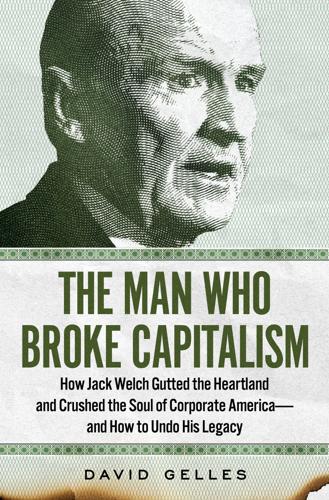
The Man Who Broke Capitalism: How Jack Welch Gutted the Heartland and Crushed the Soul of Corporate America—and How to Undo His Legacy
by
David Gelles
Published 30 May 2022
Mergers and acquisitions ballooned on his watch, concentrating power in the hands of just a few companies in sector after sector, leading to higher prices, fewer options for employees, and a less dynamic economy overall. And the amount of taxes paid by corporations has plummeted, while buybacks and dividends have exploded. This is the world Welch bequeathed us. One where Jeff Bezos can afford to send himself to space, while hourly employees at Amazon warehouses are monitored by robots. One where a handful of private equity executives can buy up iconic American food companies and squeeze them dry. One where a media company can go $80 billion into debt buying up rivals, then lay off tens of thousands of workers in the name of profitability. Welchism has made America poorer, less equal, and more insecure.

Aerotropolis
by
John D. Kasarda
and
Greg Lindsay
Published 2 Jan 2009
Apparel is the largest niche in e-tailing—bigger than electronics, bigger than books— surging from zero to $23 billion in sales in barely a decade. The company plans to double its apparel sales this year and predicts clothing will surpass shoes to become its largest category within the next five. If you happen to be in the market for a Michael Kors dress, your order vanishes behind a wall running the height and width of the warehouse, carried by a robot. There are seventy in all—orange cubes three feet tall, resembling oversize Roombas—zooming between the shelves, which they slide under and haul to pickers on their heads. Seen from above, the warehouse itself appears to be moving, as racks shudder and glide to the front, seemingly of their own volition.

Accelerando
by
Stross, Charles
Published 22 Jan 2005

Whiplash: How to Survive Our Faster Future
by
Joi Ito
and
Jeff Howe
Published 6 Dec 2016

The Economic Singularity: Artificial Intelligence and the Death of Capitalism
by
Calum Chace
Published 17 Jul 2016
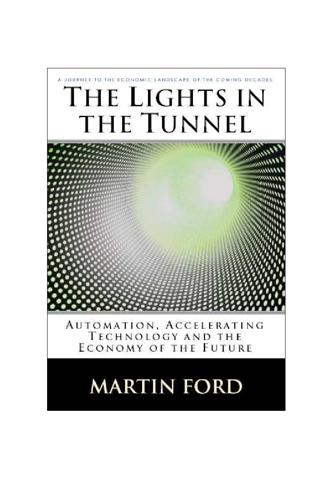
The Lights in the Tunnel
by
Martin Ford
Published 28 May 2011
All of this makes for a rather harsh contrast between the foresight shown by the military as compared with civilian economists and analysts. Consider the uneven terrain and the highly unpredictable and dynamic situations that would be faced by battlefield robots. Now compare that with the environment inside a supermarket or warehouse. It seems obvious that designing robots to perform much of the routine work required within commercial and industrial job settings is far less challenging than producing autonomous military robots. The U.S. military is rightly investing substantial resources in studying the future impact of robotics and artificial intelligence on the way in which future wars will be fought.
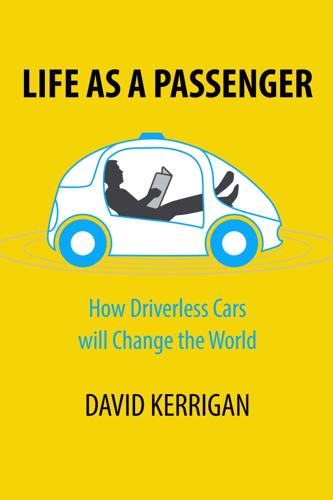
Life as a Passenger: How Driverless Cars Will Change the World
by
David Kerrigan
Published 18 Jun 2017
You can’t generally shoot a gun on the street, but you can go to a shooting range if you enjoy firearms. The same might come for driving, with human drivers confined to tracks. To date, robots have existed primarily in tightly controlled areas, where human interaction or the potential for human interaction is minimal/tightly controlled - such as in factories, or warehouses. In those instances where robots venture out, it tends to be in dedicated areas such as tunnels or lanes, again devoid of humans. As they venture visibly further into our lives and although protecting us from harm, become a threat to employment or perceived freedom, pushing us out of the way, how will we react?
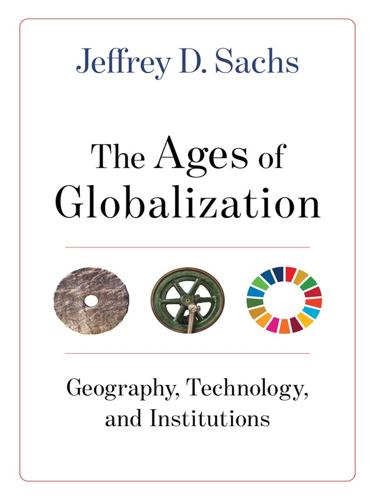
The Ages of Globalization
by
Jeffrey D. Sachs
Published 2 Jun 2020
Robots are continuing to replace workers on factory floors in several manufacturing sectors. And it seems clear that other jobs in the service sector will also vanish in the future. Trucks and taxis may well become self-driving, thereby displacing millions of professional drivers. Warehouses are increasingly operated with robots carrying, stacking, and packaging the merchandise. And retail stores are giving way to e-commerce and direct delivery of purchases, again with expert systems and potentially self-driving delivery vehicles. In recent decades, lower-skilled workers displaced by machines have seen their earnings stagnate or decline, while higher-skilled workers have been made more productive by those same machines and have seen their earnings rise.

Quarantine
by
Greg Egan
Published 13 Dec 1994

The Rise and Fall of American Growth: The U.S. Standard of Living Since the Civil War (The Princeton Economic History of the Western World)
by
Robert J. Gordon
Published 12 Jan 2016
Typically, these inputs each play essential roles; that is, improvements in one do not obviate the need for the other.51 Just as Baxter cooperates with human workers, other robots do not just displace workers but also make the remaining workers more valuable and create new jobs, including those who are building and programming the robots. The complementarity between robots and human workers is illustrated by the cooperative work ritual taking place daily in Amazon warehouses, often cited as a frontier example of robotic technology. Far from replacing all human workers, in these warehouses the Kiva robots do not actually touch any of the merchandise but rather are limited to lifting shelves containing the objects and moving the shelves to the packer, who lifts the object off the shelf and performs the packing operation by hand.52 The tactile skills needed for the robots to distinguish the different shapes, sizes, and textures of the objects on the shelves are beyond the capability of current robot technology.
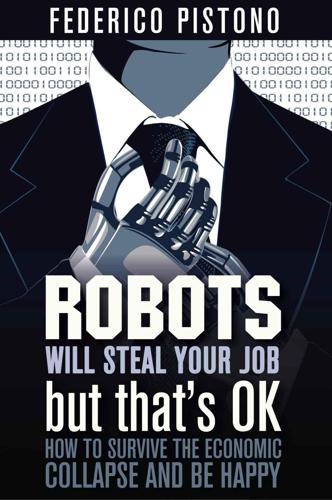
Robots Will Steal Your Job, But That's OK: How to Survive the Economic Collapse and Be Happy
by
Pistono, Federico
Published 14 Oct 2012

Give People Money
by
Annie Lowrey
Published 10 Jul 2018
half of American jobs: Carl Benedikt Frey and Michael Osborne, “The Future of Employment” (working paper, the Oxford Martin Programme on Technology and Employment, University of Oxford, Sept. 17, 2013). truck drivers: Natalie Kitroeff, “Robots Could Replace 1.7 Million American Truckers in the Next Decade,” Los Angeles Times, Sept. 25, 2016. warehouse box packers: Natalie Kitroeff, “Warehouses Promised Lots of Jobs, but Robot Workforce Slows Hiring,” Los Angeles Times, Dec. 4, 2016. pharmacists: Andrew Zaleski, “Behind Pharmacy Counter, Pill-Packing Robots Are on the Rise,” CNBC.com, Nov. 15, 2016. accountants: Gianni Giacomelli and Prashant Shukla, “Does Automation Mean Job Losses for Accountants?

Human Compatible: Artificial Intelligence and the Problem of Control
by
Stuart Russell
Published 7 Oct 2019
Report from my Berkeley colleagues on deep RL for robotic motor control: Sergey Levine et al., “End-to-end training of deep visuomotor policies,” Journal of Machine Learning Research 17 (2016): 1–40. 21. On the possibilities for automating the work of hundreds of thousands of warehouse workers: Tom Simonite, “Grasping robots compete to rule Amazon’s warehouses,” Wired, July 26, 2017. 22. I’m assuming a generous one laptop-CPU minute per page, or about 1011 operations. A third-generation tensor processing unit from Google runs at about 1017 operations per second, meaning that it can read a million pages per second, or about five hours for eighty million two-hundred-page books. 23.

Trees on Mars: Our Obsession With the Future
by
Hal Niedzviecki
Published 15 Mar 2015

The Measure of Progress: Counting What Really Matters
by
Diane Coyle
Published 15 Apr 2025
Most physical infrastructure assets are poorly measured, including their depreciation and maintenance, despite their fundamental importance to the economy. Different types of buildings have limitations on their functions and involve different bundles of assets: consider an e- commerce warehouse packed with logistics robotics and a hospital with beds and MRI scanners. The notion of infrastructure is expanding in policy debates to embrace social and cultural infrastructure (Kelsey and Kenny 2021) and digital public infrastructure (Eaves et al. 2024), so an appreciation of the importance of assets is in the air.

Your Computer Is on Fire
by
Thomas S. Mullaney
,
Benjamin Peters
,
Mar Hicks
and
Kavita Philip
Published 9 Mar 2021

The Revenge of Analog: Real Things and Why They Matter
by
David Sax
Published 8 Nov 2016
“As intelligent machines become cheaper and more capable, they will increasingly replace human labor, especially in relatively structured environments such as factories and especially for the most routine and repetitive tasks,” Brynjolfsson, McAfee, and the journalist Michael Spence wrote in an article for Foreign Affairs. “To put it another way, offshoring is often only a way station on the road to automation.” What began on the factory floor has edged up to the cubicle and corner office, threatening not just warehouse workers and delivery drivers with robots and drones, but lawyers, radiologists, and newspaper reporters, whose jobs are increasingly being done by artificial intelligence software. In a few years, as you step into your self-driving car, what job will it take you to? If the answer is a job that can either be done by a computer with artificial intelligence or a robot equipped with one, you might want to think about a new career path.
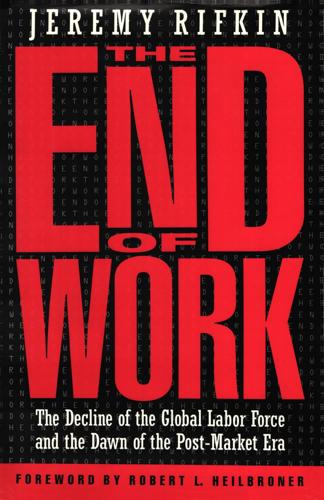
The End of Work
by
Jeremy Rifkin
Published 28 Dec 1994
As we noted in chapter 7, retailers like Wal-Mart are now bypassing wholesalers altogether, preferring to deal directly with manufacturers. With computerized monitoring and scanning equipment at the point of sale, retailers can transmit shipping orders directly to manufacturers' warehouses by way of electronic data interchange (EDI). At the other end, automated warehouses staffed by computer-driven robots and remote-controlled delivery vehicles fill orders in a matter of minutes without the assistance of human physical labor. An increasing number of warehouses are operated by "silicon supervisors" and overseen by a skeleton human workforce whose primary task is to monitor the equipment and serve as traffic controllers.
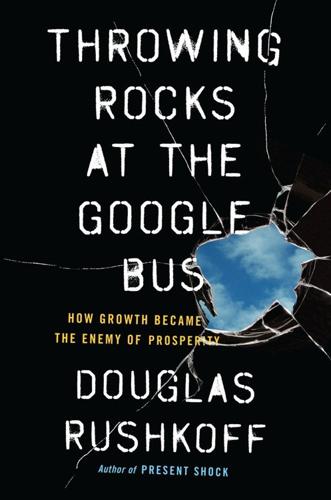
Throwing Rocks at the Google Bus: How Growth Became the Enemy of Prosperity
by
Douglas Rushkoff
Published 1 Mar 2016
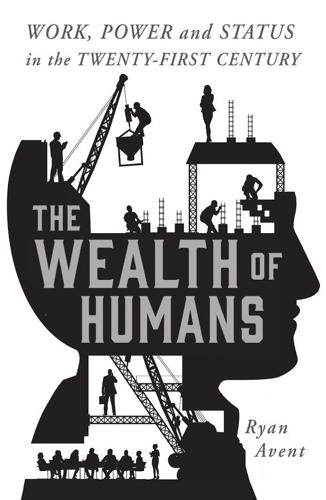
The Wealth of Humans: Work, Power, and Status in the Twenty-First Century
by
Ryan Avent
Published 20 Sep 2016

Super Thinking: The Big Book of Mental Models
by
Gabriel Weinberg
and
Lauren McCann
Published 17 Jun 2019
Automation is also a great way to take advantage of economies of scale, when an operation becomes more efficient as its size increases. Economies of scale explain some of the advantages larger companies have relative to smaller ones. They can afford to pay the large up-front costs to have the biggest factories and warehouses with the most cutting-edge robots and machinery. Once set up, this technology means each new product moves through the factory and warehouse faster and cheaper. The companies can then spread the initial fixed costs across a large volume of production, being able to produce or ship goods at much cheaper rates overall, even accounting for the up-front costs.

Paper Girl: A Memoir of Home and Family in a Fractured America
by
Beth Macy
Published 6 Oct 2025

Radical Technologies: The Design of Everyday Life
by
Adam Greenfield
Published 29 May 2017
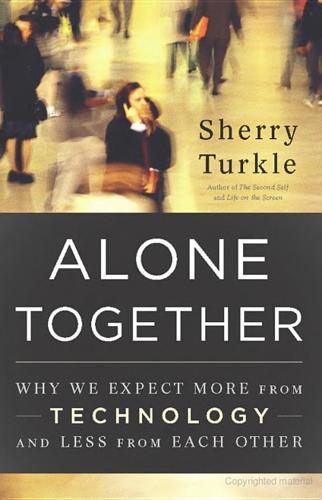
Alone Together
by
Sherry Turkle
Published 11 Jan 2011
If human nursing care is regimented, scripted into machinelike performances, it is easier to accept a robot nurse. If the elderly are tended by underpaid workers who seem to do their jobs by rote, it is not difficult to warm to the idea of a robot orderly. (Similarly, if children are minded at day-care facilities that seem like little more than safe warehouses, the idea of a robot babysitter becomes less troubling.) But people are capable of the higher standard of care that comes with empathy. The robot is innocent of such capacity. Yet, Tim, fifty-three, whose mother lives in the same nursing home as Miriam, is grateful for Paro’s presence. Tim visits his mother several times a week.
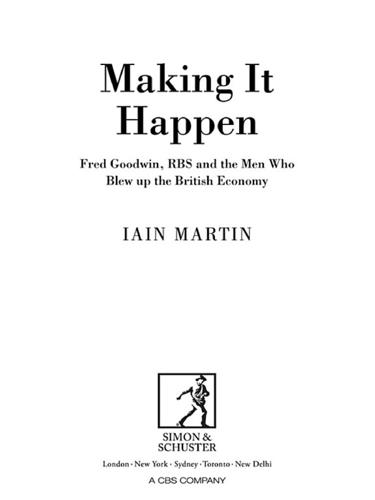
Making It Happen: Fred Goodwin, RBS and the Men Who Blew Up the British Economy
by
Iain Martin
Published 11 Sep 2013
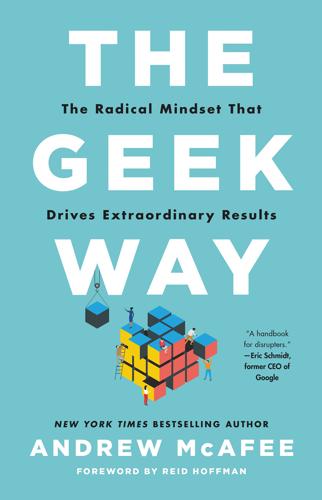
The Geek Way: The Radical Mindset That Drives Extraordinary Results
by
Andrew McAfee
Published 14 Nov 2023

The Dead Hand: The Untold Story of the Cold War Arms Race and Its Dangerous Legacy
by
David Hoffman
Published 1 Jan 2009
"From the beginning it seemed like a crazy idea," Popov said, "but Sandakhchiev was a master of ambitious projects who set high goals. While we were struggling with making DNA fragments of 15 to 20 units long, he dreamed about thousands. We understood that in order to really speed things up we had to do the synthesis automatically. Sandakhchiev came up with the idea to build a huge warehouse or factory with automatic robots assembling DNA of different viruses. One virus a month, that would be an ideal productivity. And you could assemble biological weapons one after another." The World Health Organization campaign against smallpox had taken more than a decade to complete. Now Sandakhchiev was proposing to create a new virus every month.

The Future of the Professions: How Technology Will Transform the Work of Human Experts
by
Richard Susskind
and
Daniel Susskind
Published 24 Aug 2015

To Save Everything, Click Here: The Folly of Technological Solutionism
by
Evgeny Morozov
Published 15 Nov 2013
Amazon might be a reluctant gatekeeper, but it’s a gatekeeper nevertheless. But we also need to understand where all this talk of gatekeeping ends. Would anyone really be surprised if, ten years down the road, Amazon decided that authors ought to follow the same path as some workers in its warehouses—that is, be replaced by robots? If one starts by assuming that gatekeeping is bad and efficiency is good, then authors too are gatekeepers of sorts: they temporarily imprison memes and ideas—and it’s memes and ideas that buyers actually want from books (rest assured: Amazon won’t eliminate the buyers, who also get to imprison memes and ideas—someone has to pay for the books in the end).

A Generation of Sociopaths: How the Baby Boomers Betrayed America
by
Bruce Cannon Gibney
Published 7 Mar 2017
The point where AI starts to have a substantial impact is near: Baumol may have been correct that it takes the same four players to perform a string quartet as it did in 1800, but technology has already provided us with recorded music and will soon furnish robotic players. What does society do with its cellists? (Ehrlich and the Paddocks would say: Cull them. The AIs may agree.) Yo-Yo Ma is safe for now, but low-end labor is not. Machines already stock warehouses (Amazon has a fleet of robots that have replaced manual labor), and robotization is underway with longshoremen and other traditionally well-paying blue-collar jobs.39 Some waiters have already been replaced by iPad menus; computers render pilots increasingly superfluous and will soon do the same for drivers. It is a future where humans are increasingly liberated from less skilled labor and, by implication, no longer needed for a broad range of jobs.

Wired for War: The Robotics Revolution and Conflict in the 21st Century
by
P. W. Singer
Published 1 Jan 2010

Future Crimes: Everything Is Connected, Everyone Is Vulnerable and What We Can Do About It
by
Marc Goodman
Published 24 Feb 2015

Palo Alto: A History of California, Capitalism, and the World
by
Malcolm Harris
Published 14 Feb 2023
In Amazon’s numbers, she turns up as an unqualified success. That’s how it’s supposed to work; that’s how Amazon came to dominate retail and how Jeff Bezos became the world’s richest man. A detailed 2020 investigation found that Amazon’s warehouse workers have a serious-injury rate nearly twice the warehouse industry average. And the more robotized the distribution center, the higher the injury rate. “If you’ve got robots that are moving product faster and workers have to then lift or move those products faster, there’ll be increased injuries,” an Occupational Safety and Health Administration inspecting physician with experience in the company’s facilities told reporters.40 Racing to catch up with machines rigged to run hot hurts people.

The Meritocracy Trap: How America's Foundational Myth Feeds Inequality, Dismantles the Middle Class, and Devours the Elite
by
Daniel Markovits
Published 14 Sep 2019
Amazon aspires to use technology to eliminate human warehouse management entirely, and the firm has to this end spent nearly $1 billion to buy the robotics company Kiva Systems. Meanwhile, the Chinese firm JD.com (which has entered a strategic partnership with Google) has already built a warehouse outside Shanghai at which hundreds of robots pack and ship roughly two hundred thousand boxes per day, attended by only four human workers. The management function has not disappeared, of course. Instead, the managerial control stripped away from production workers and middle managers has been concentrated in a narrow cadre of elite executives, who are separated from production workers by differences of kind rather than degree.

Artificial Intelligence: A Modern Approach
by
Stuart Russell
and
Peter Norvig
Published 14 Jul 2019